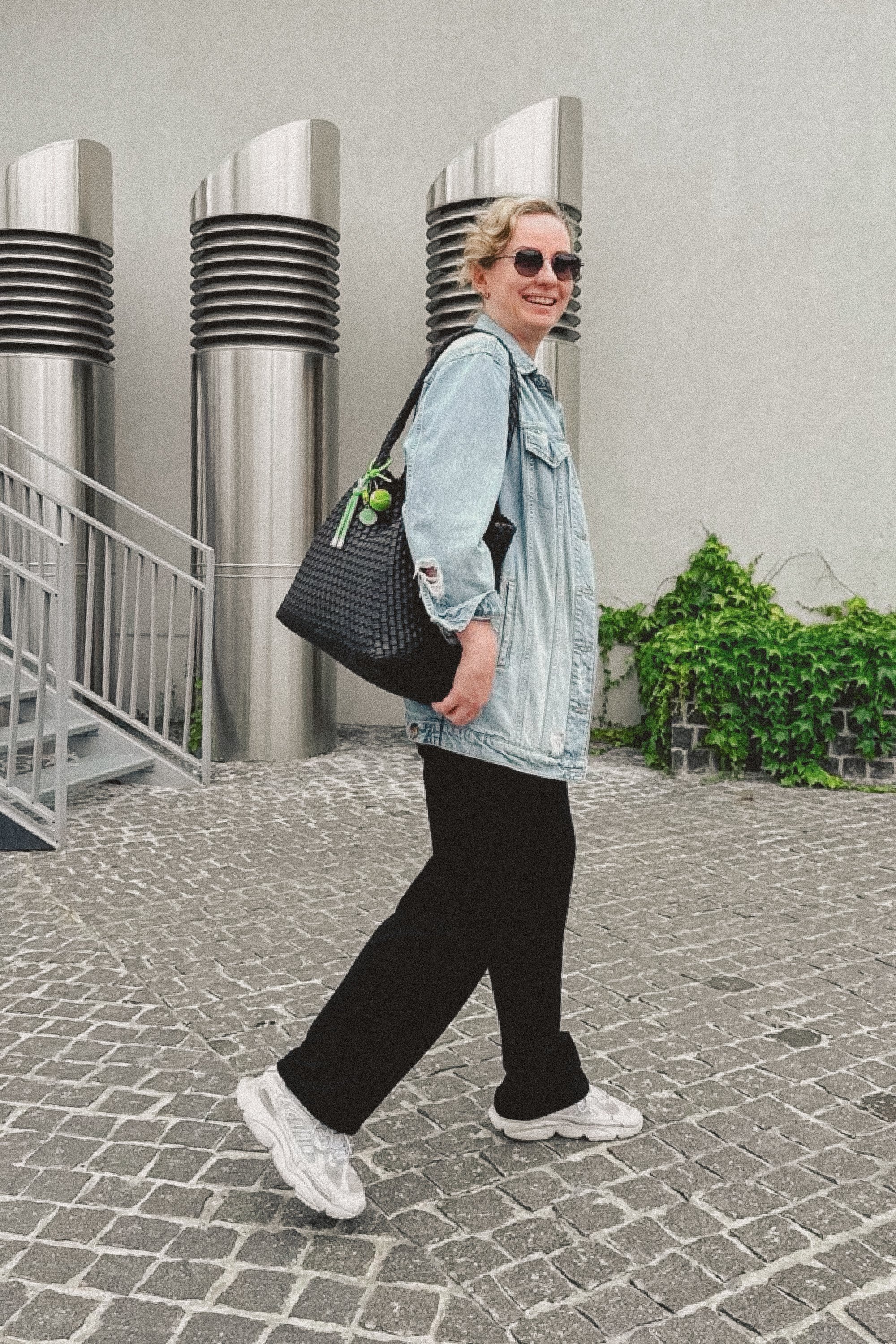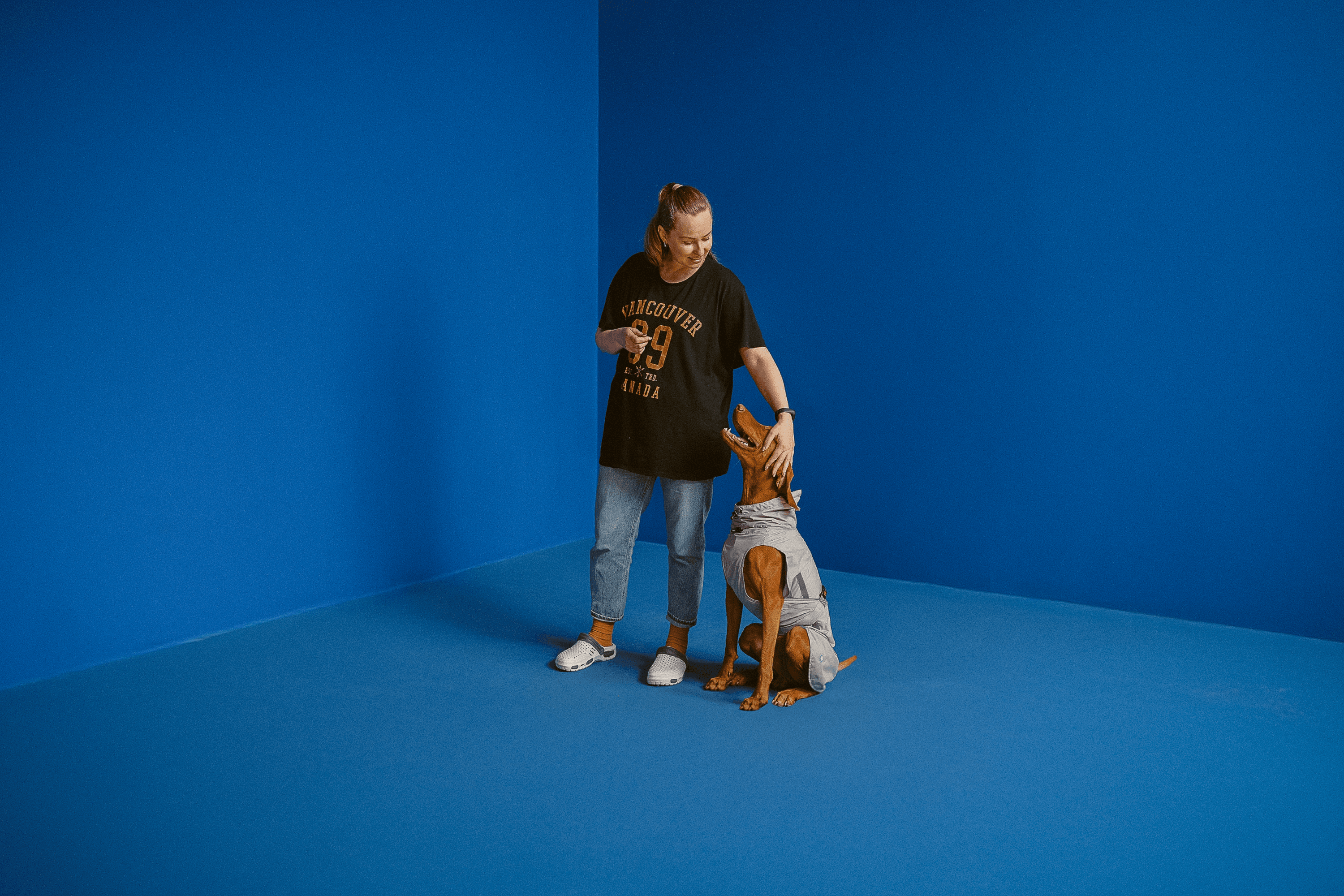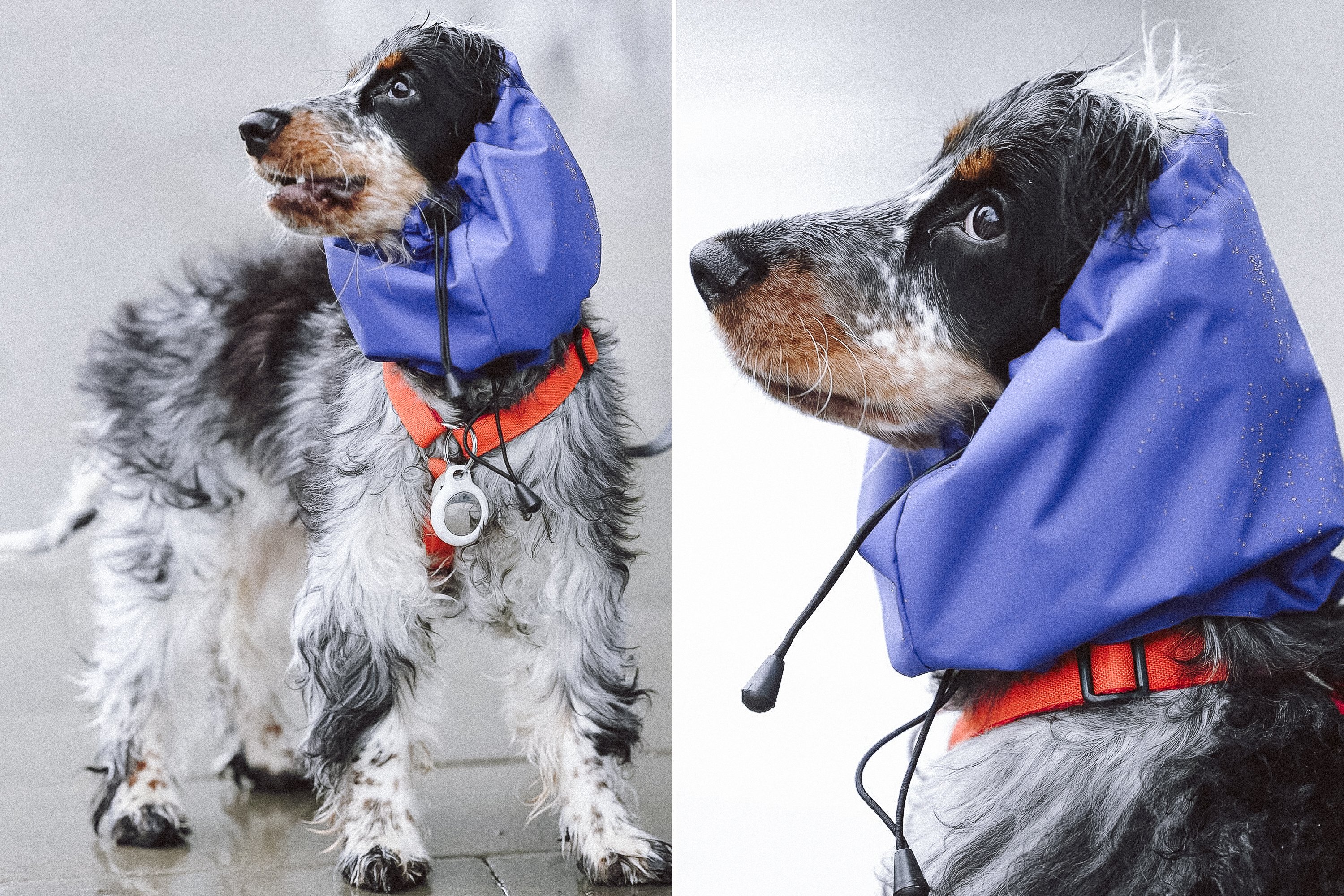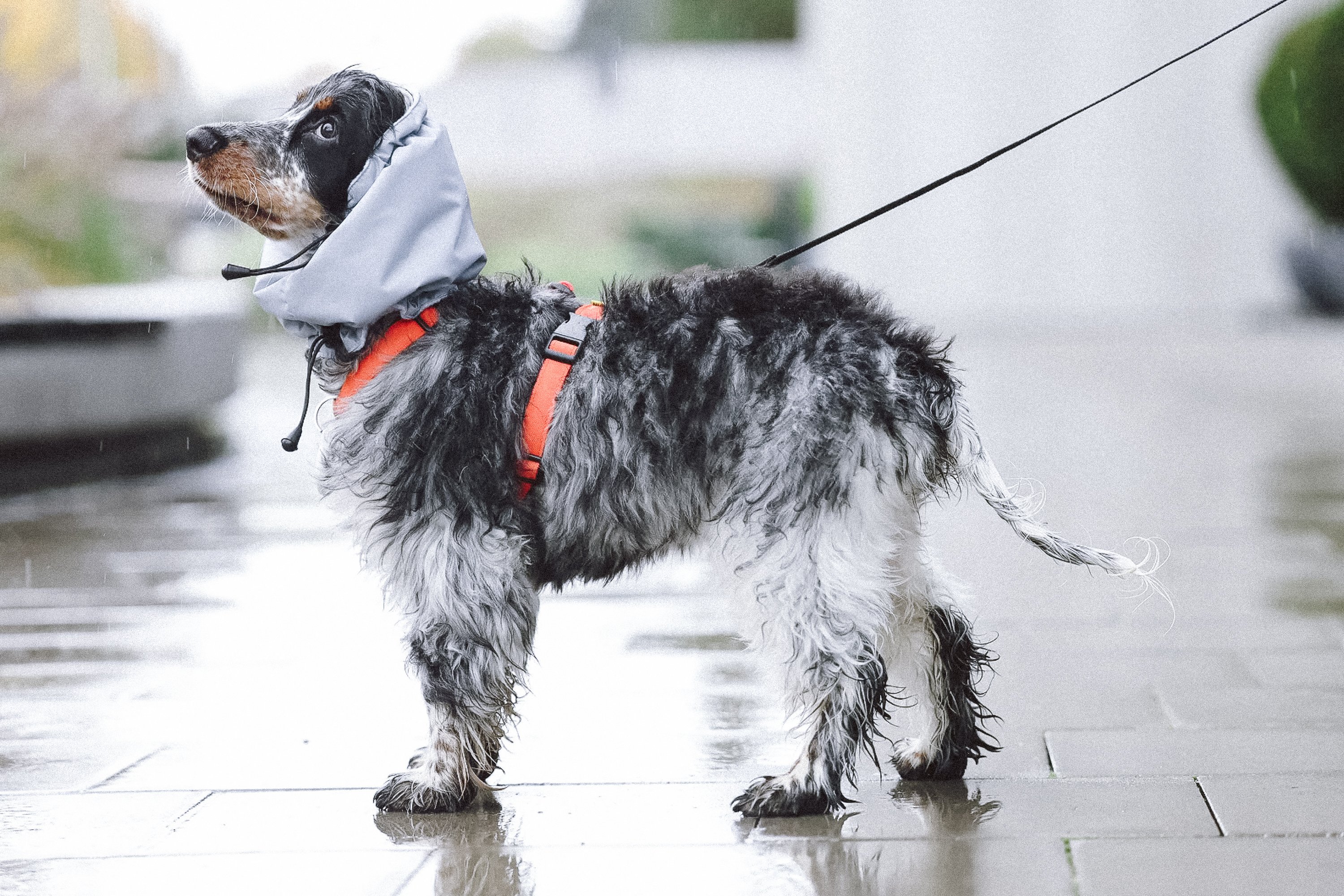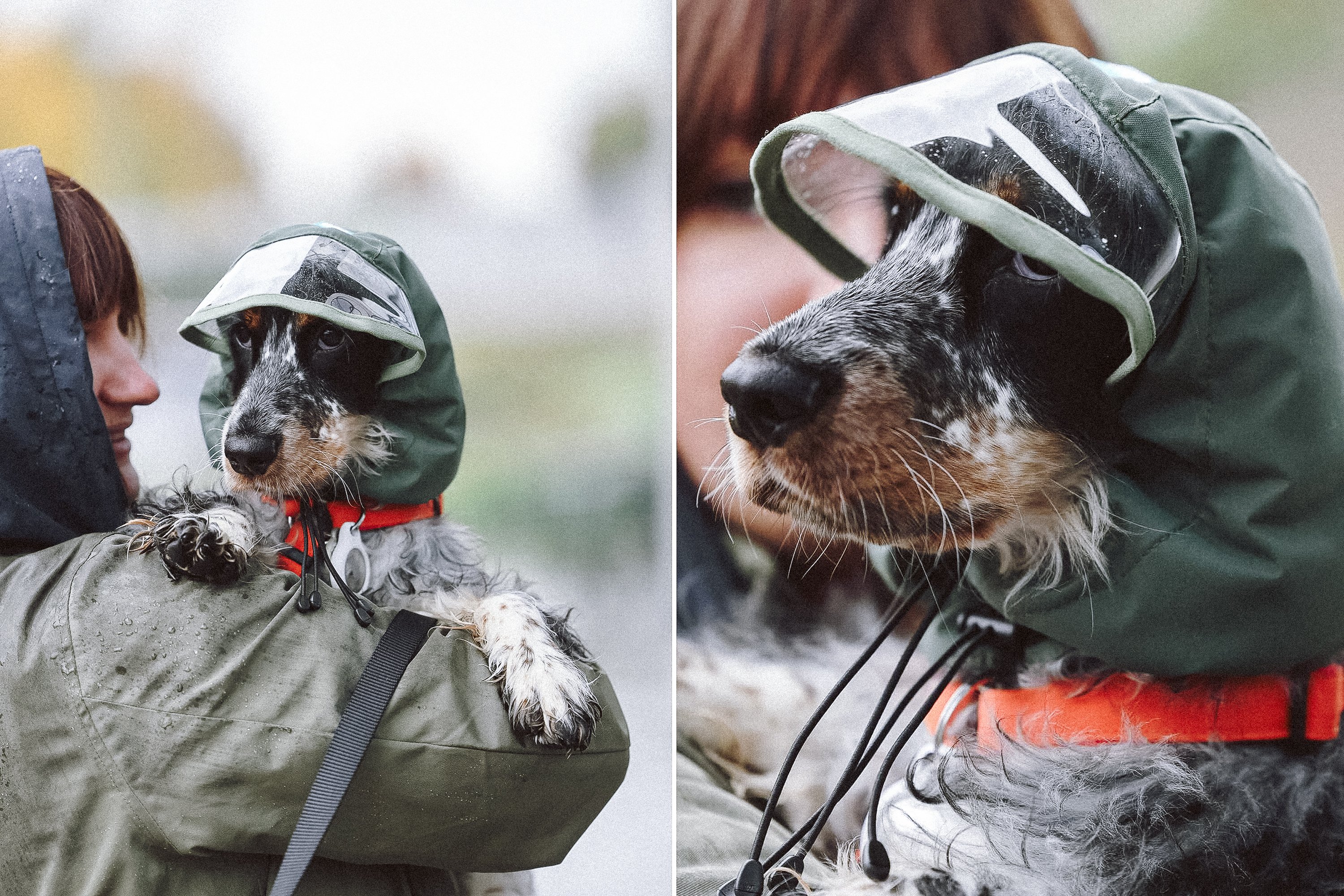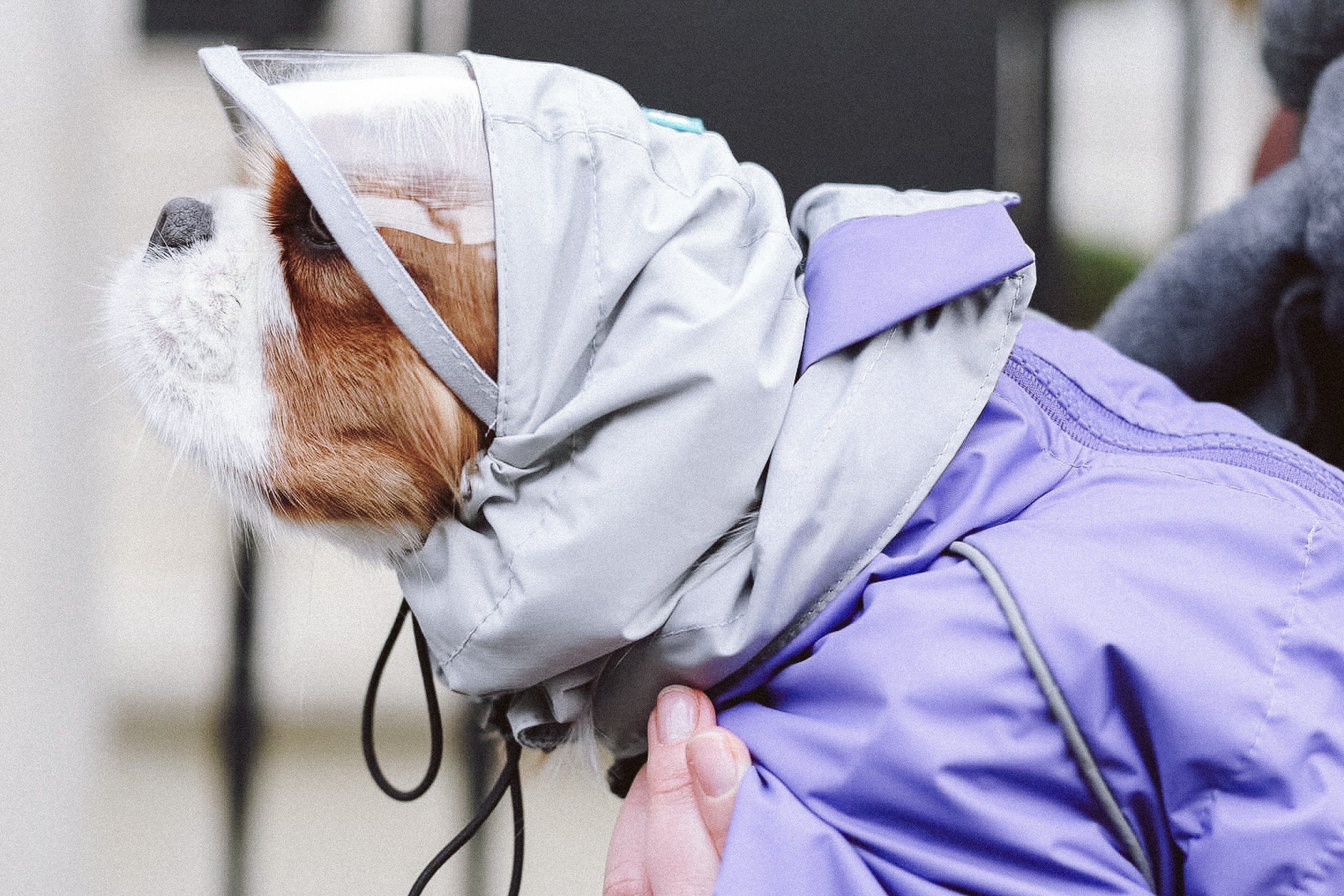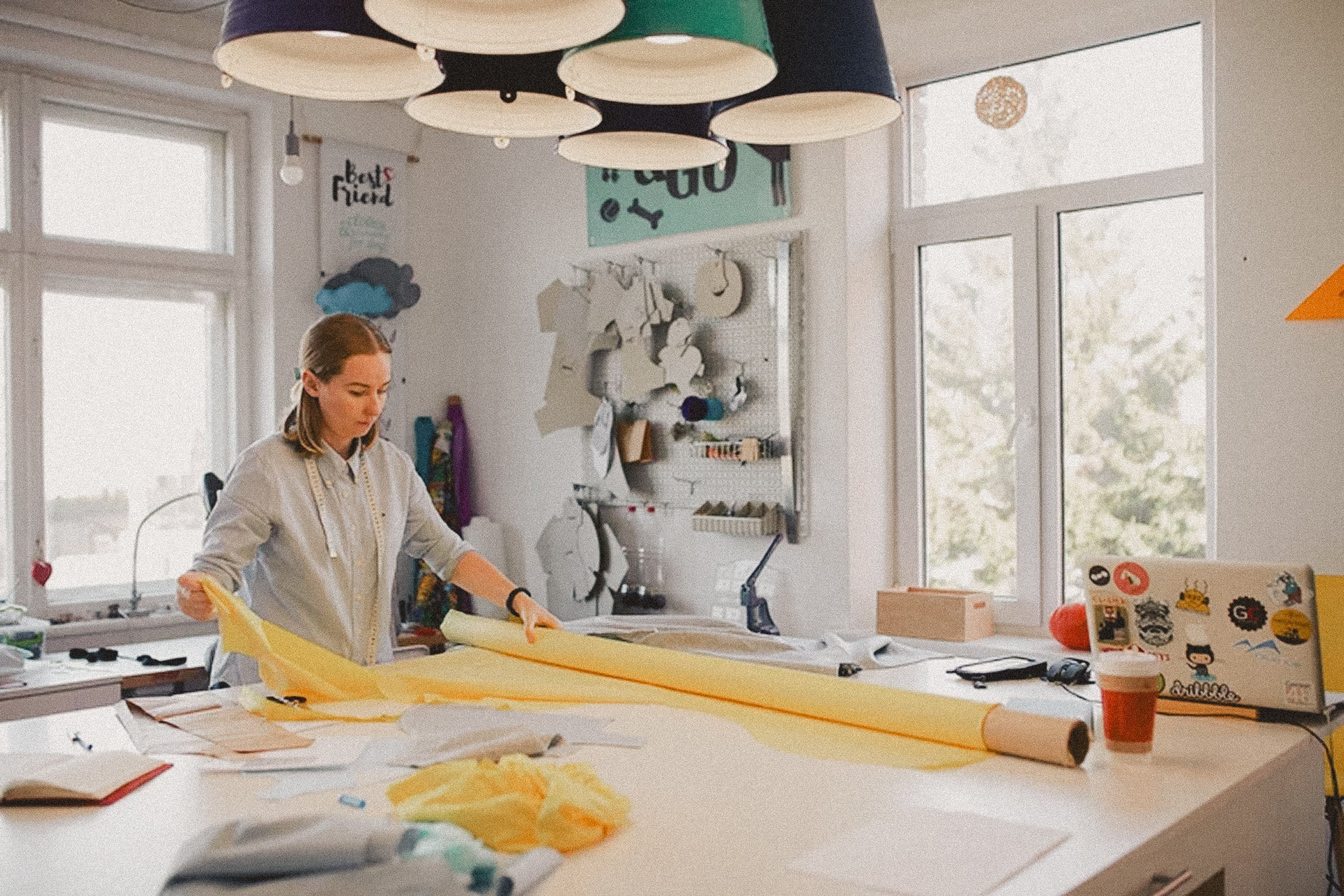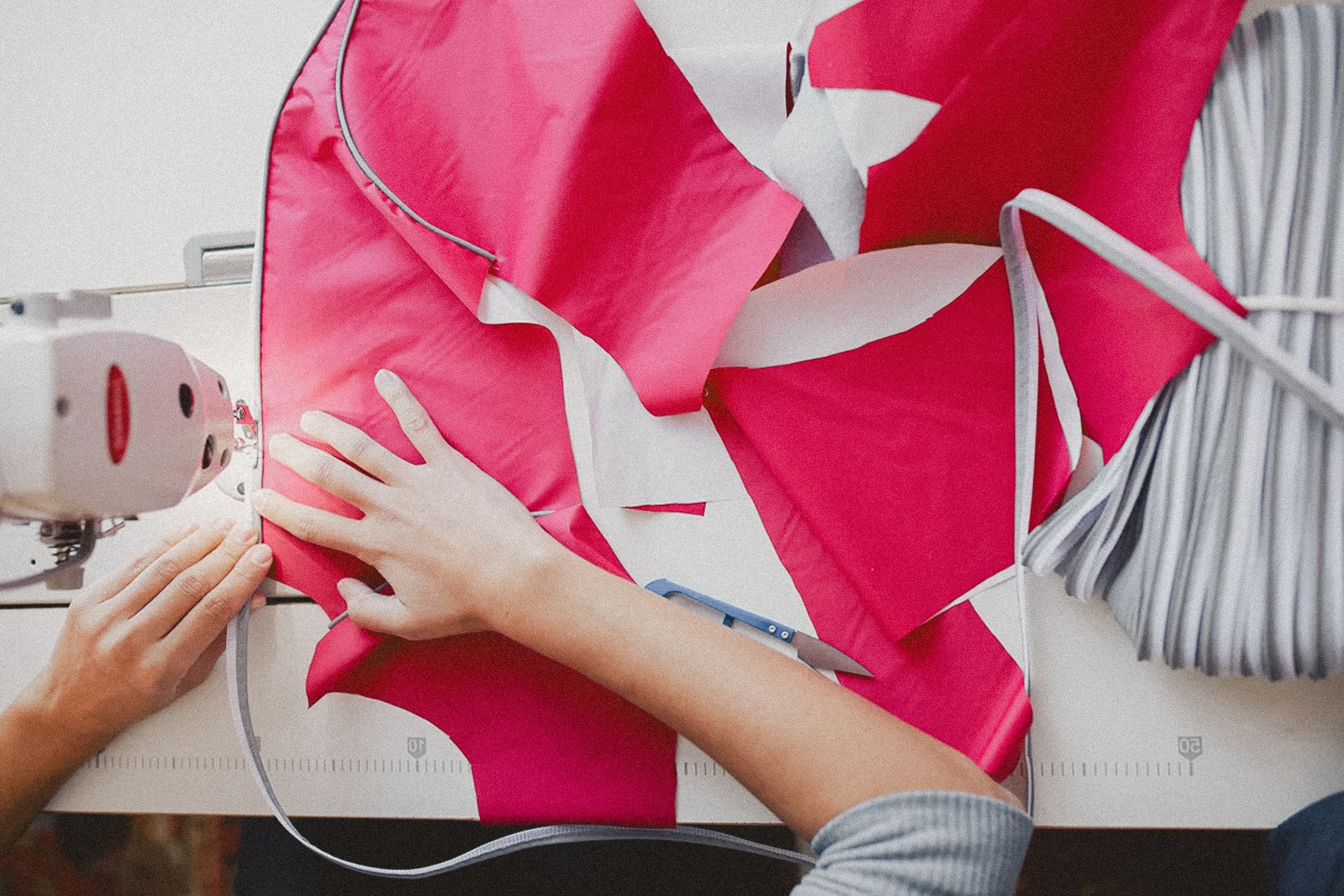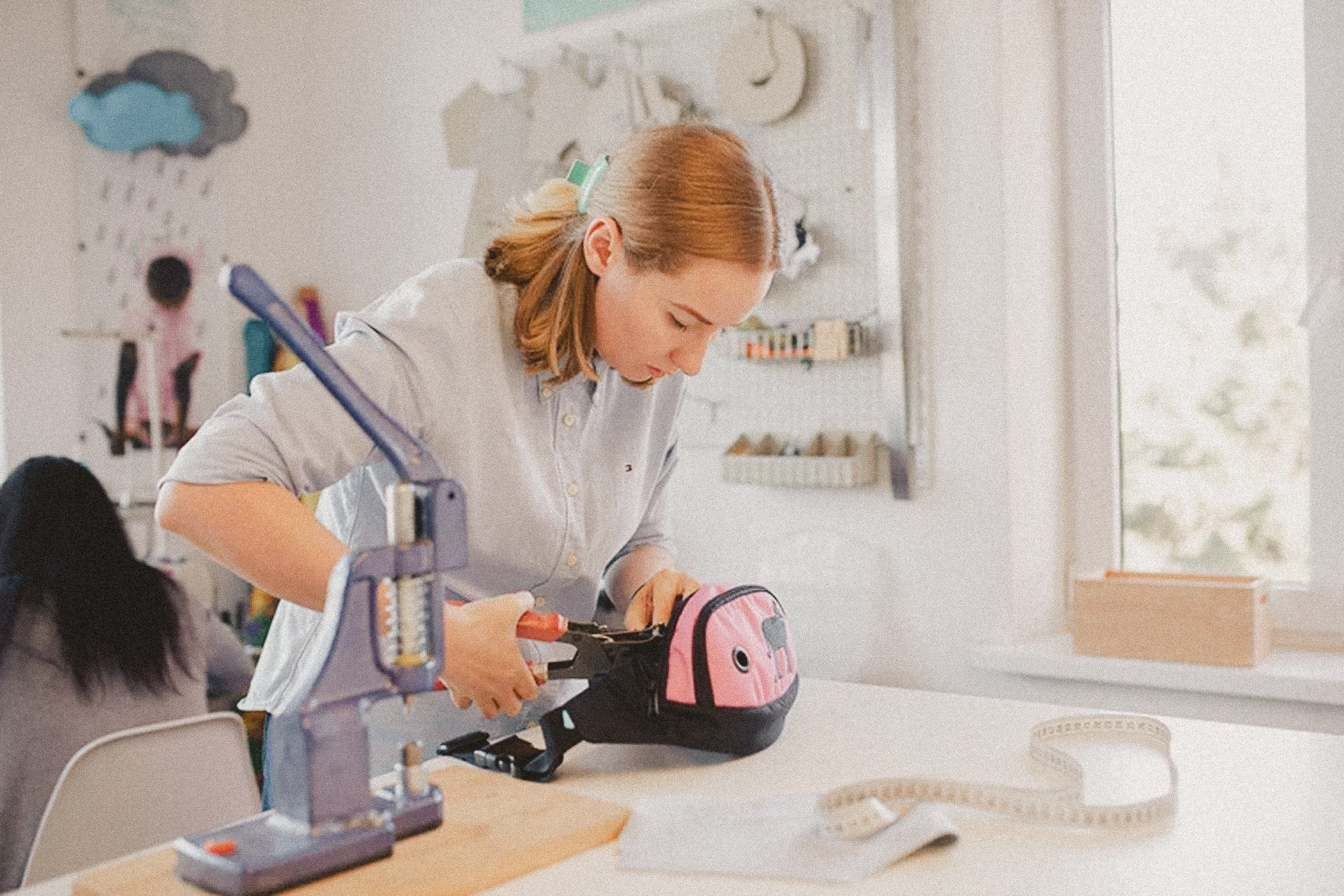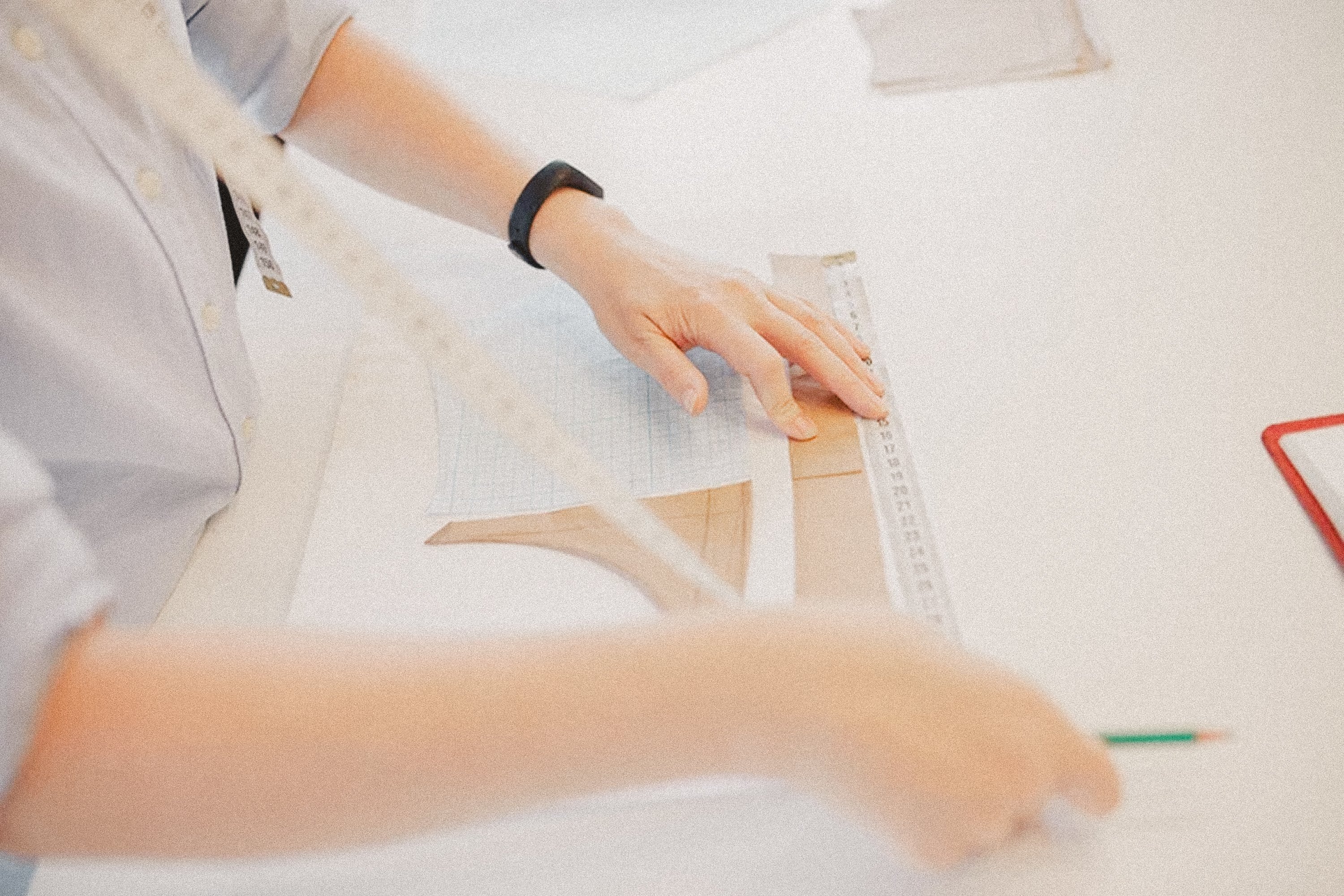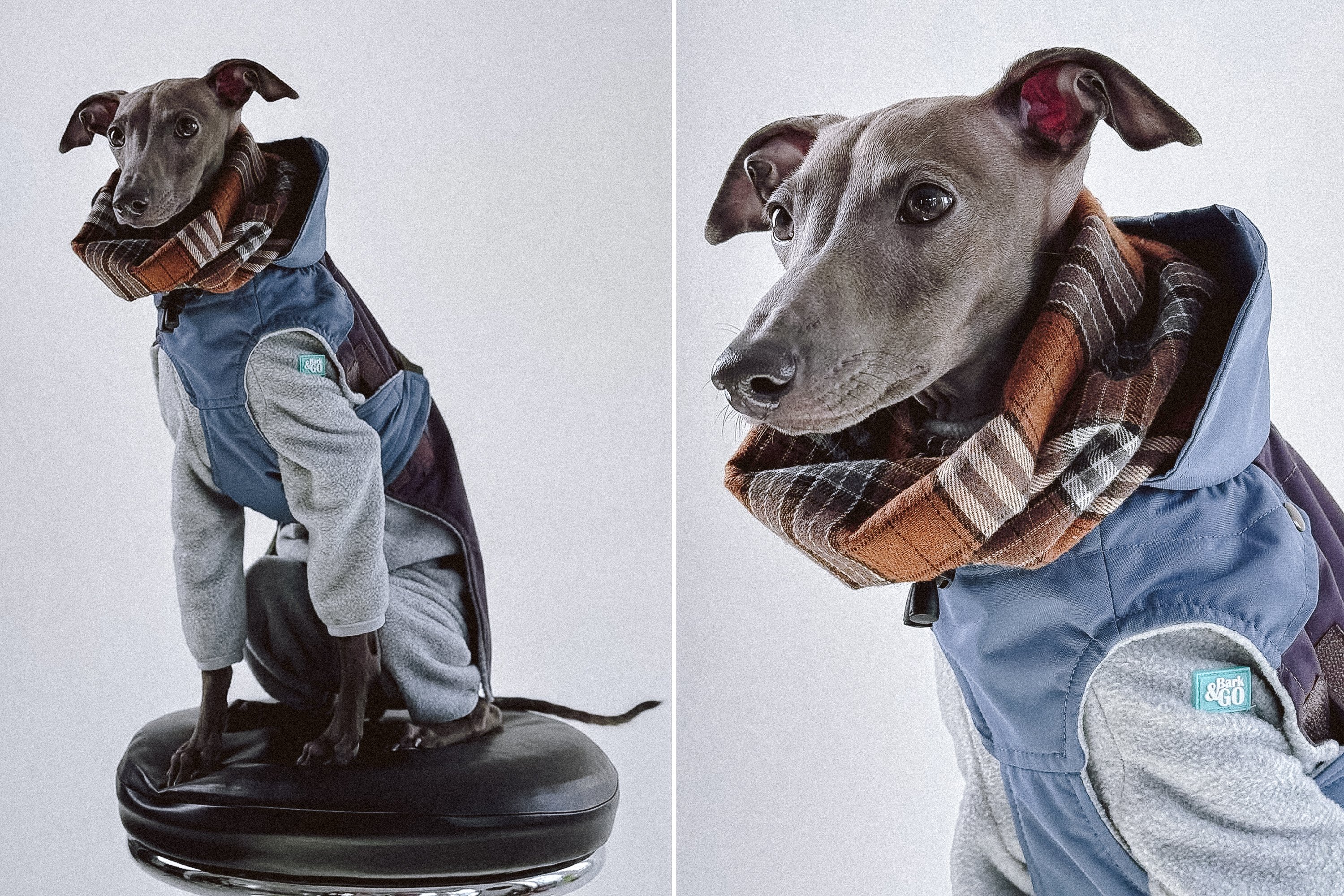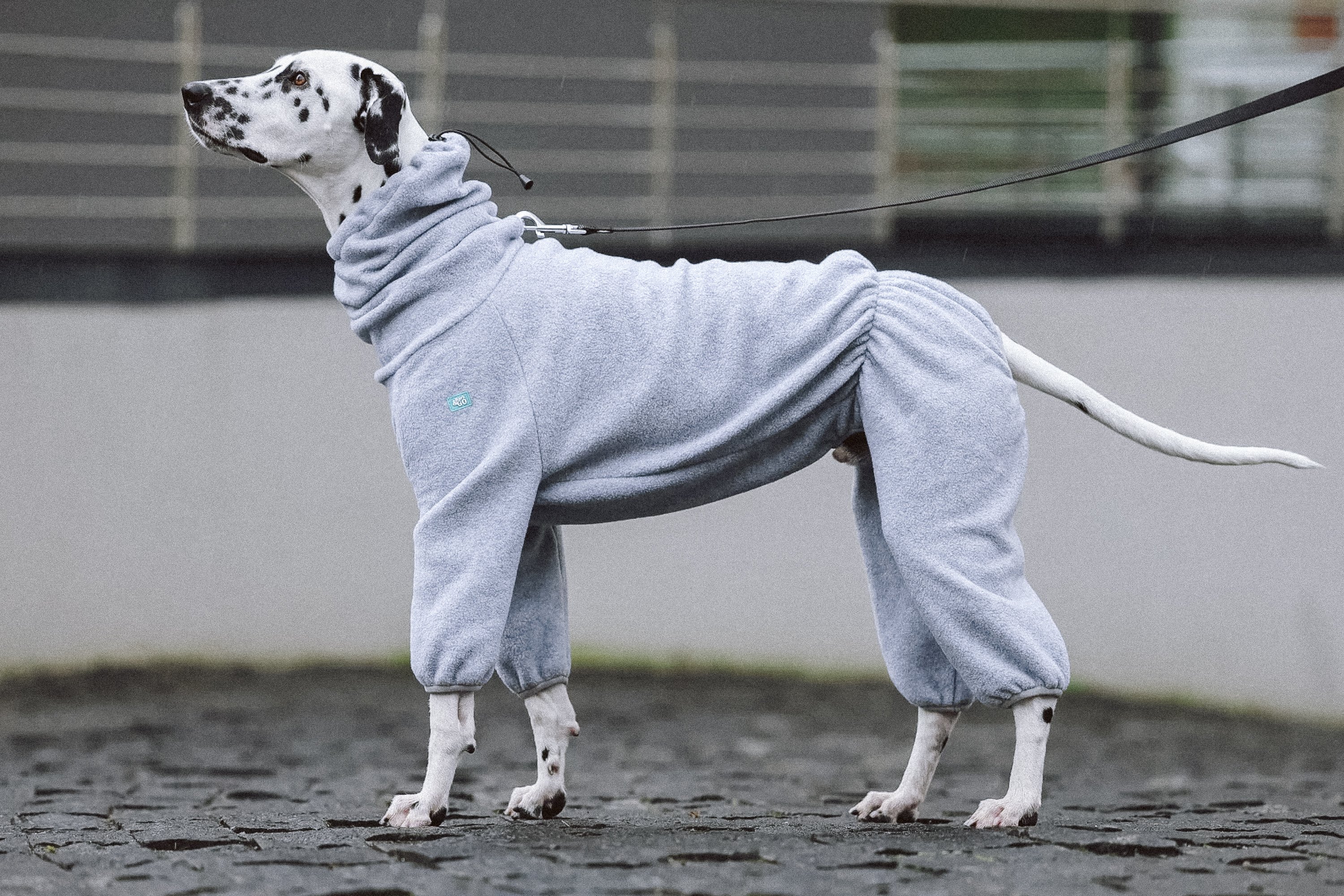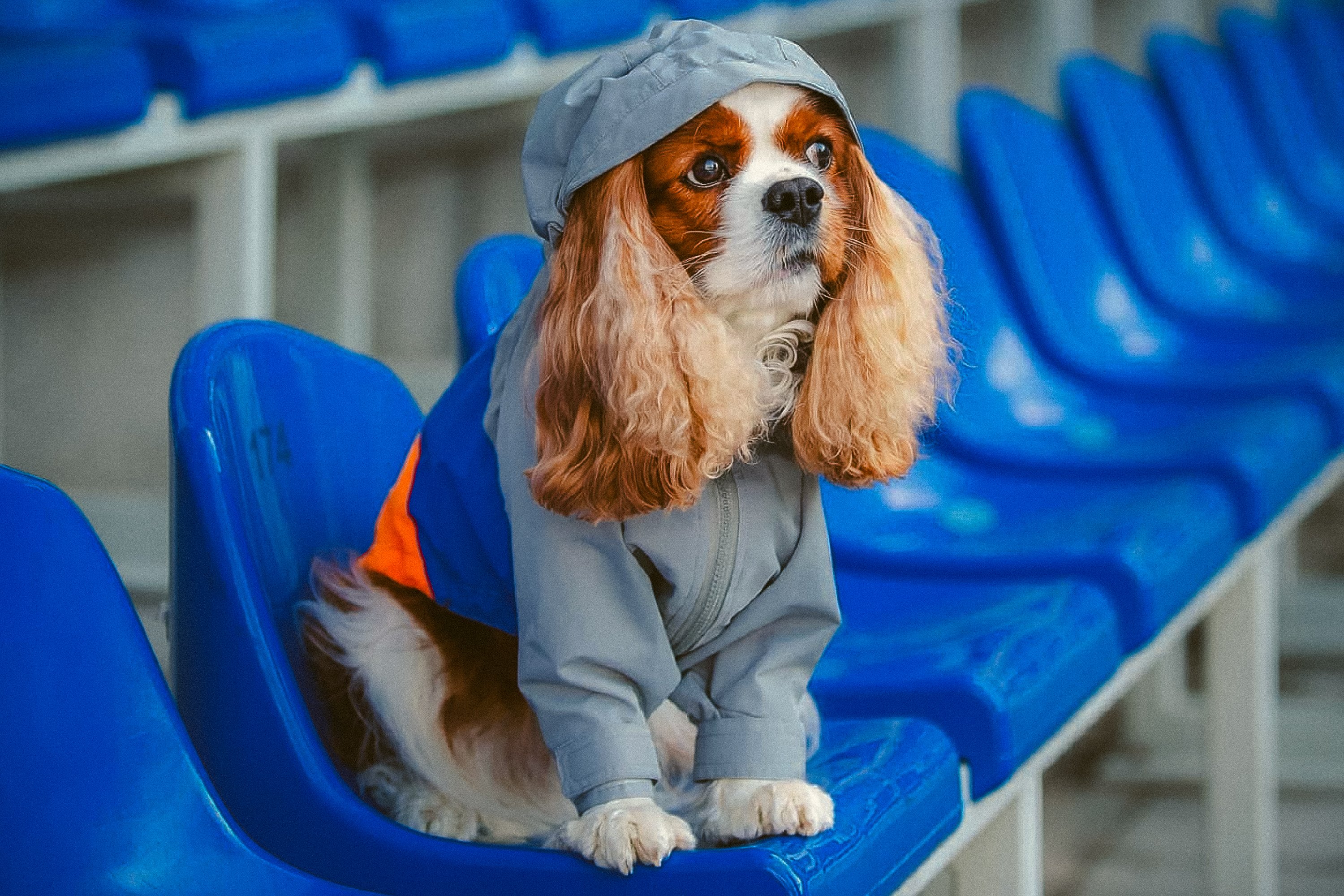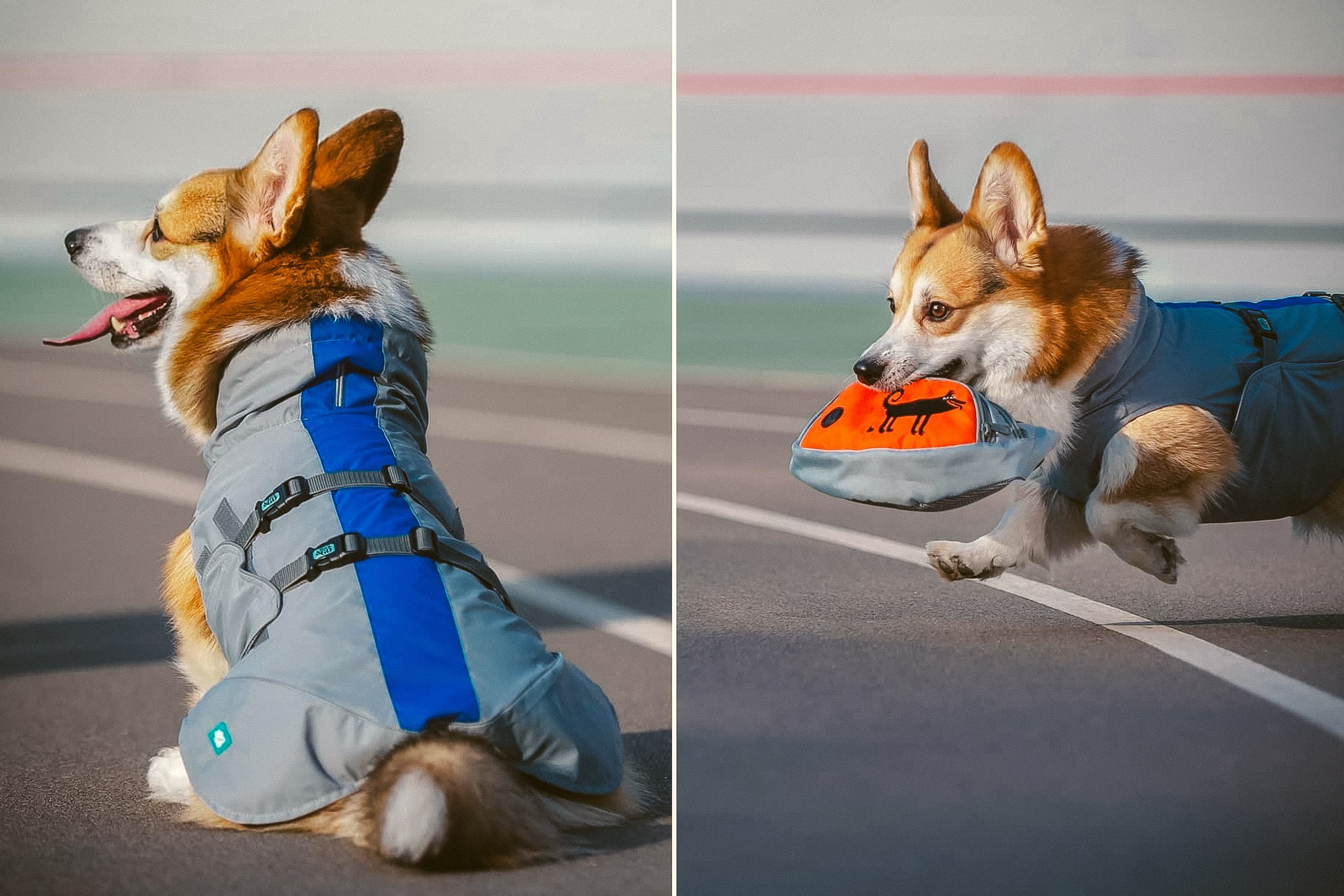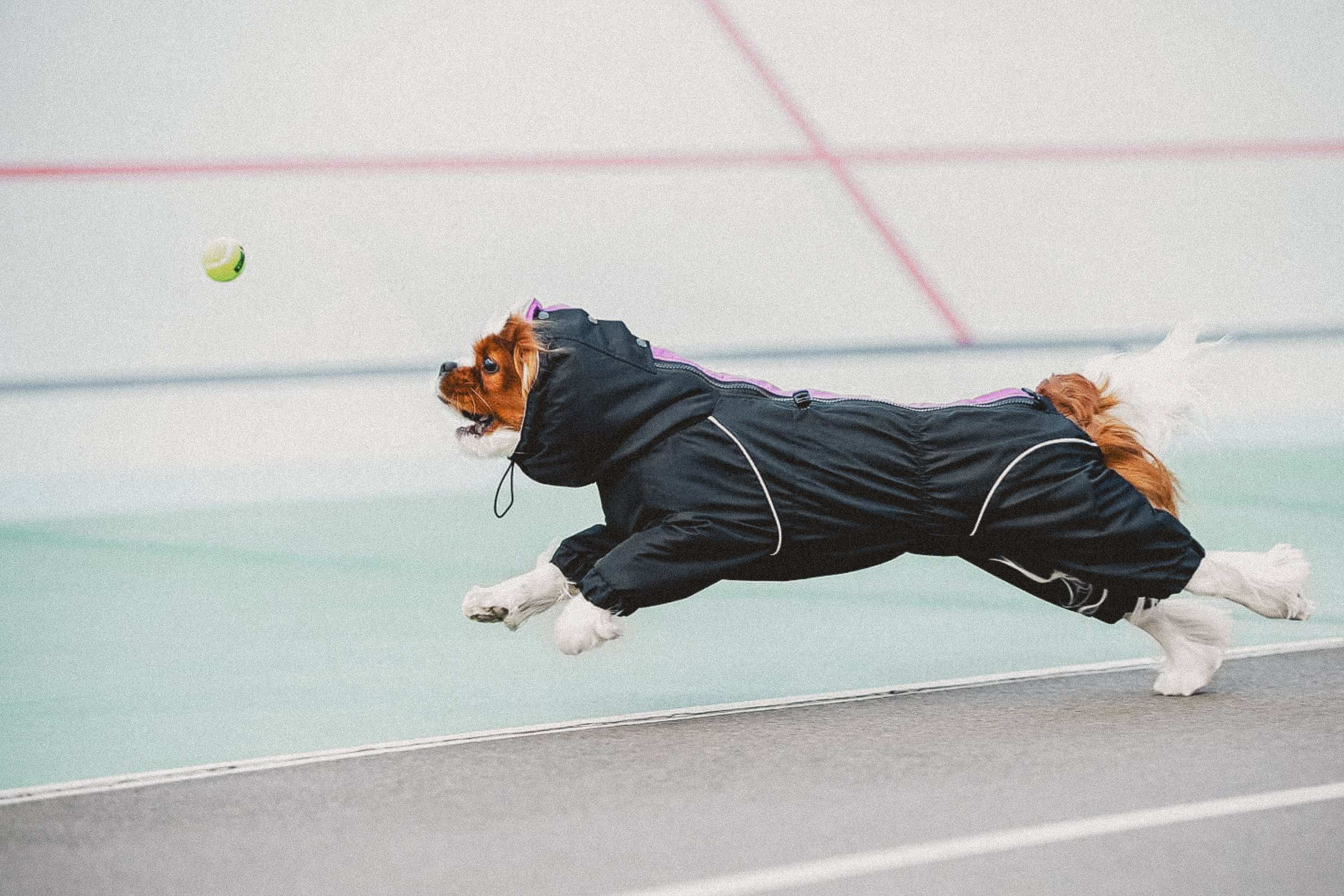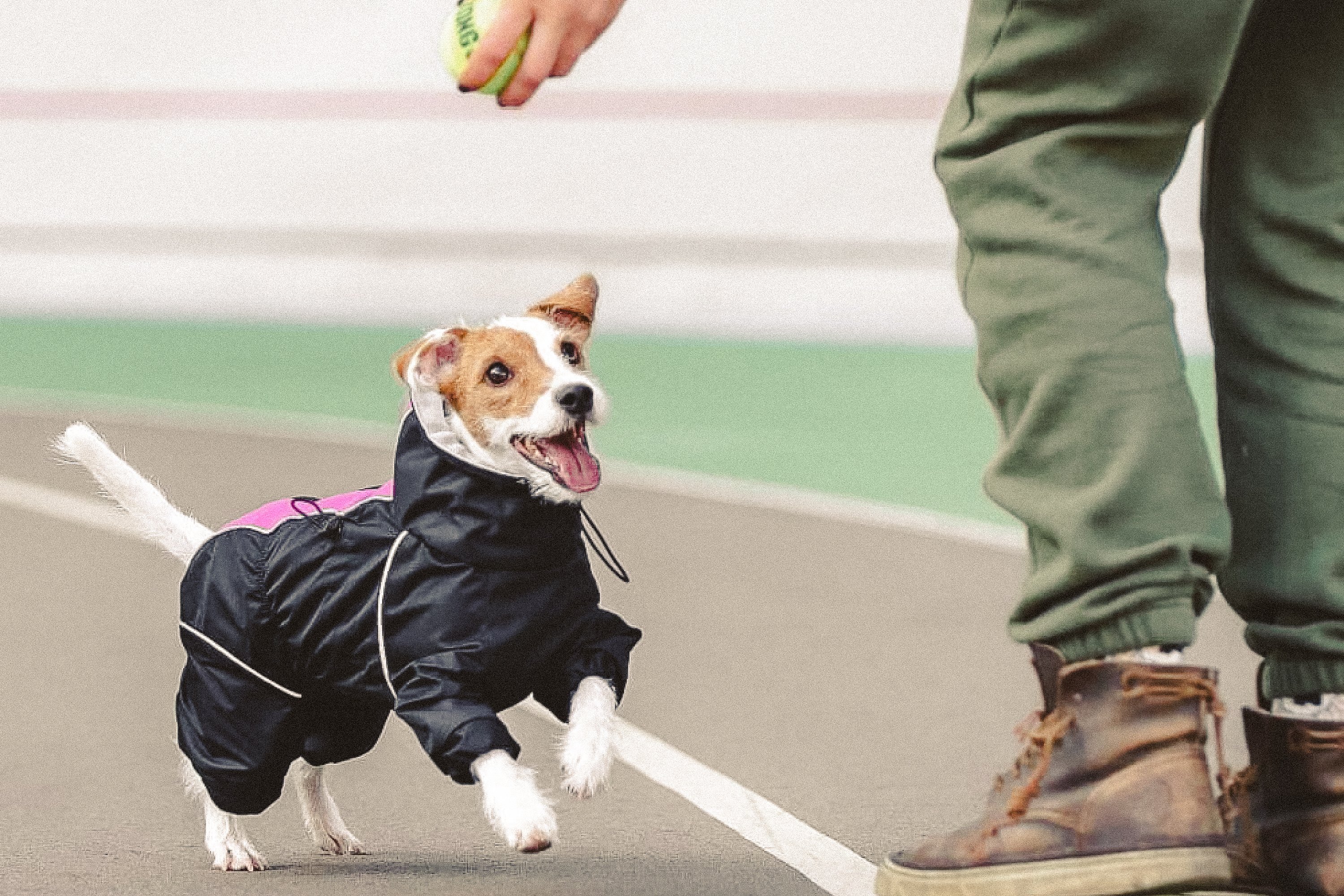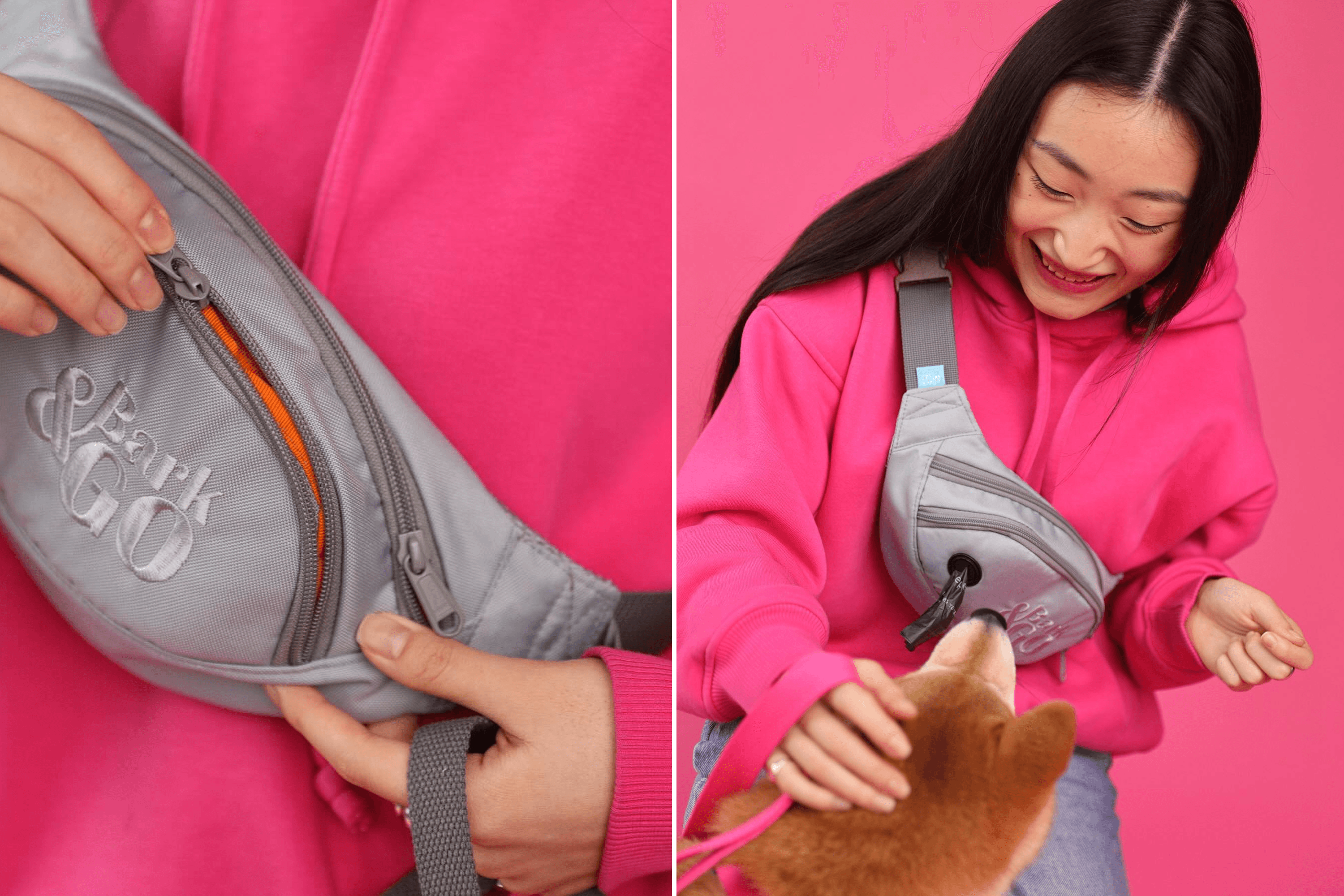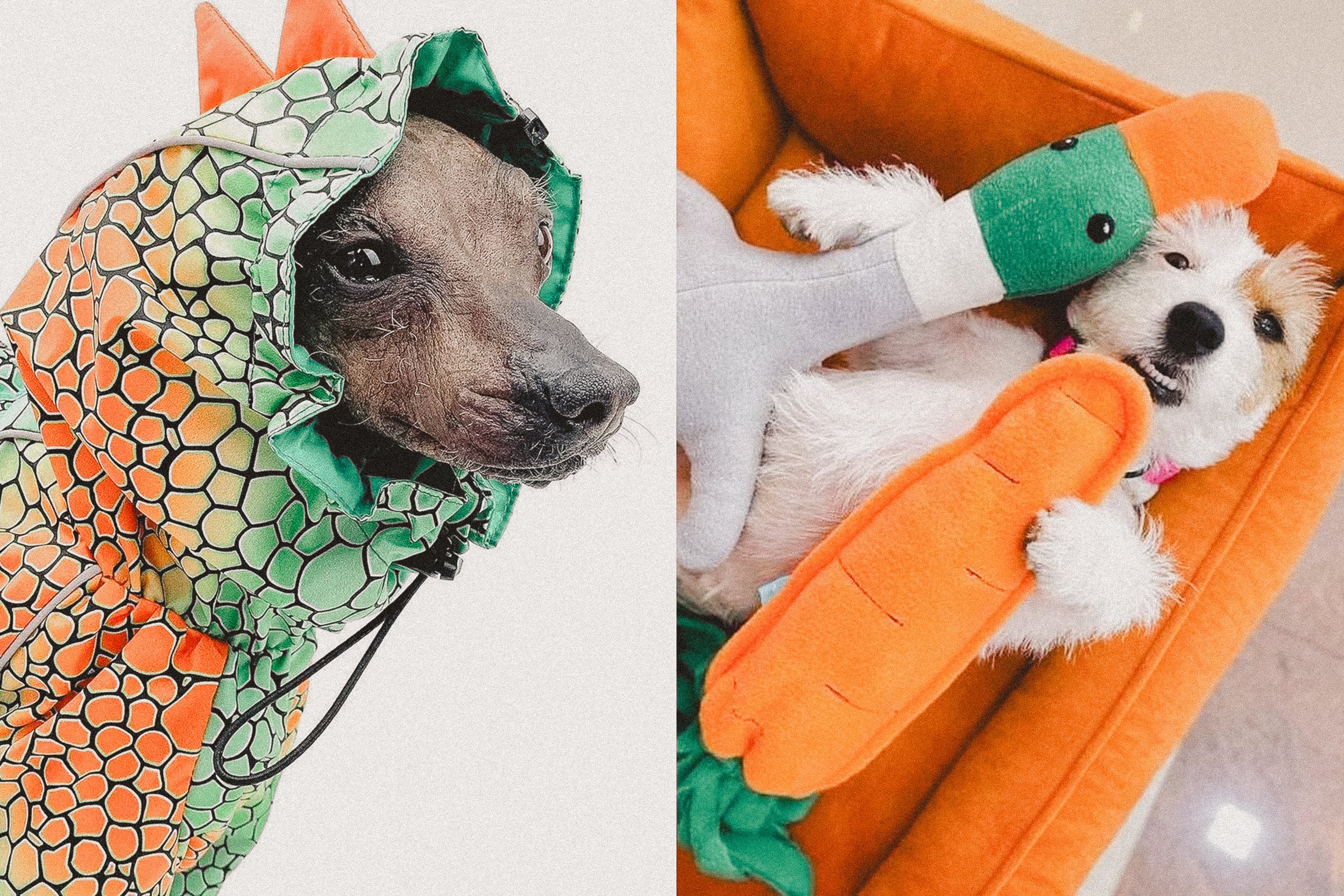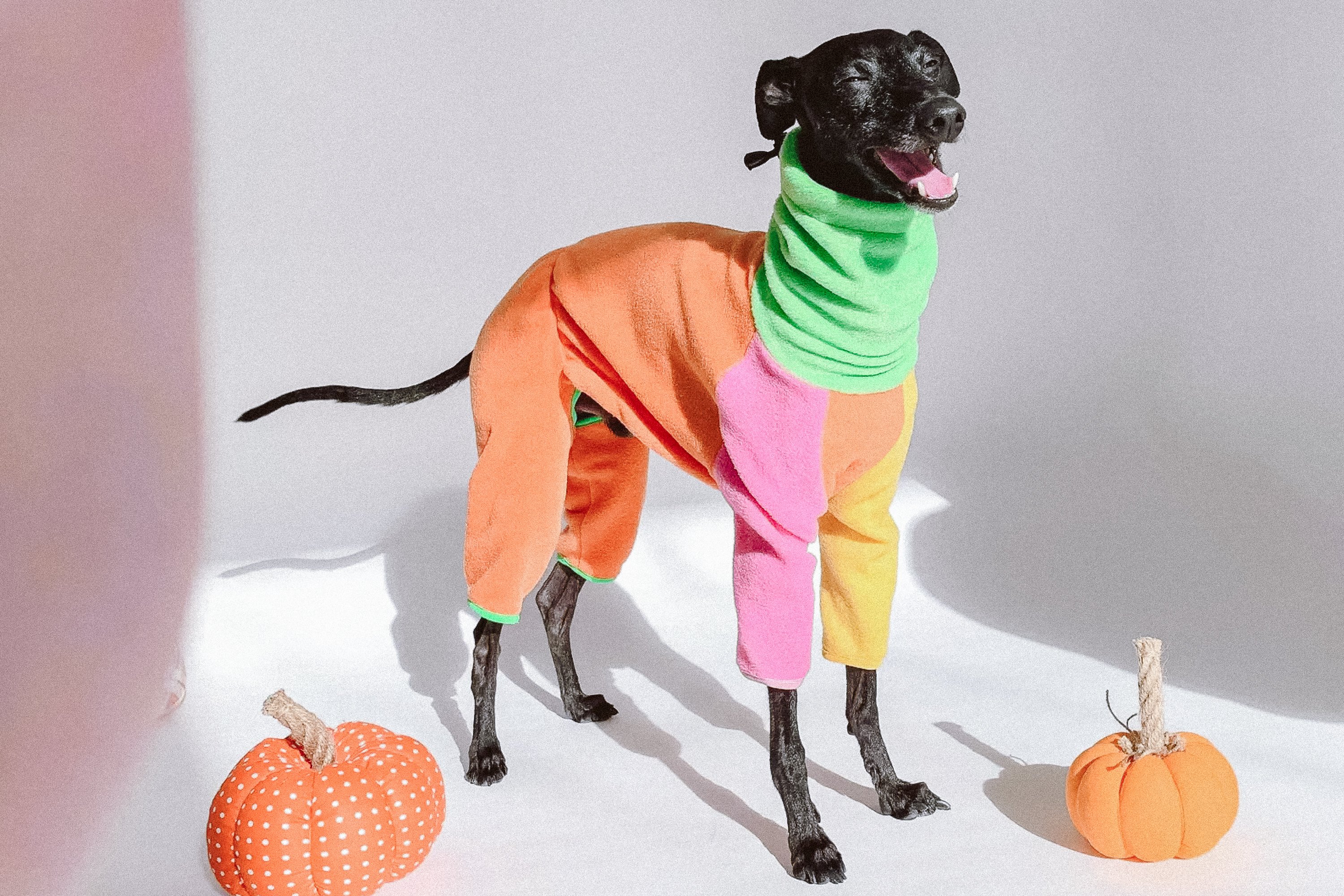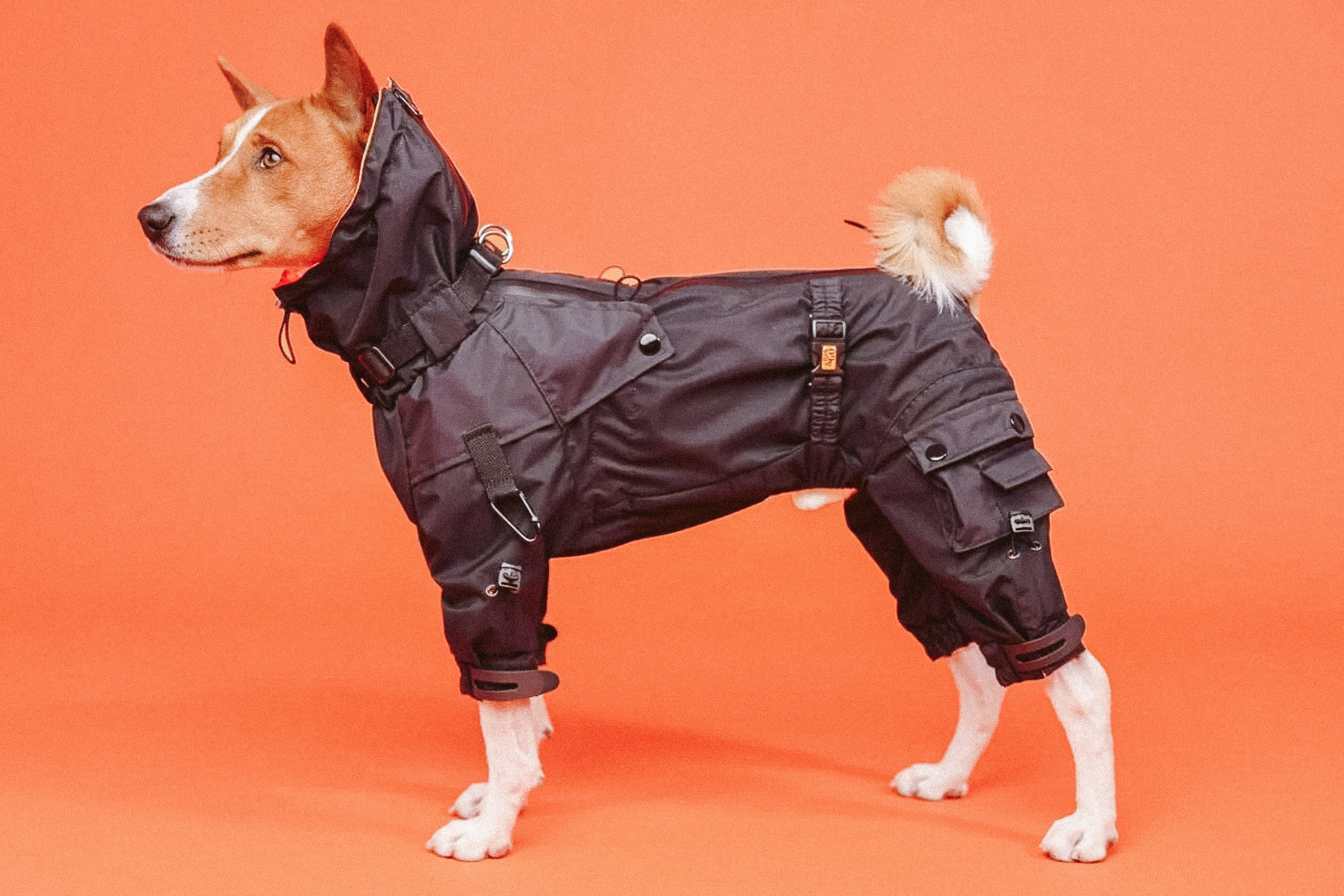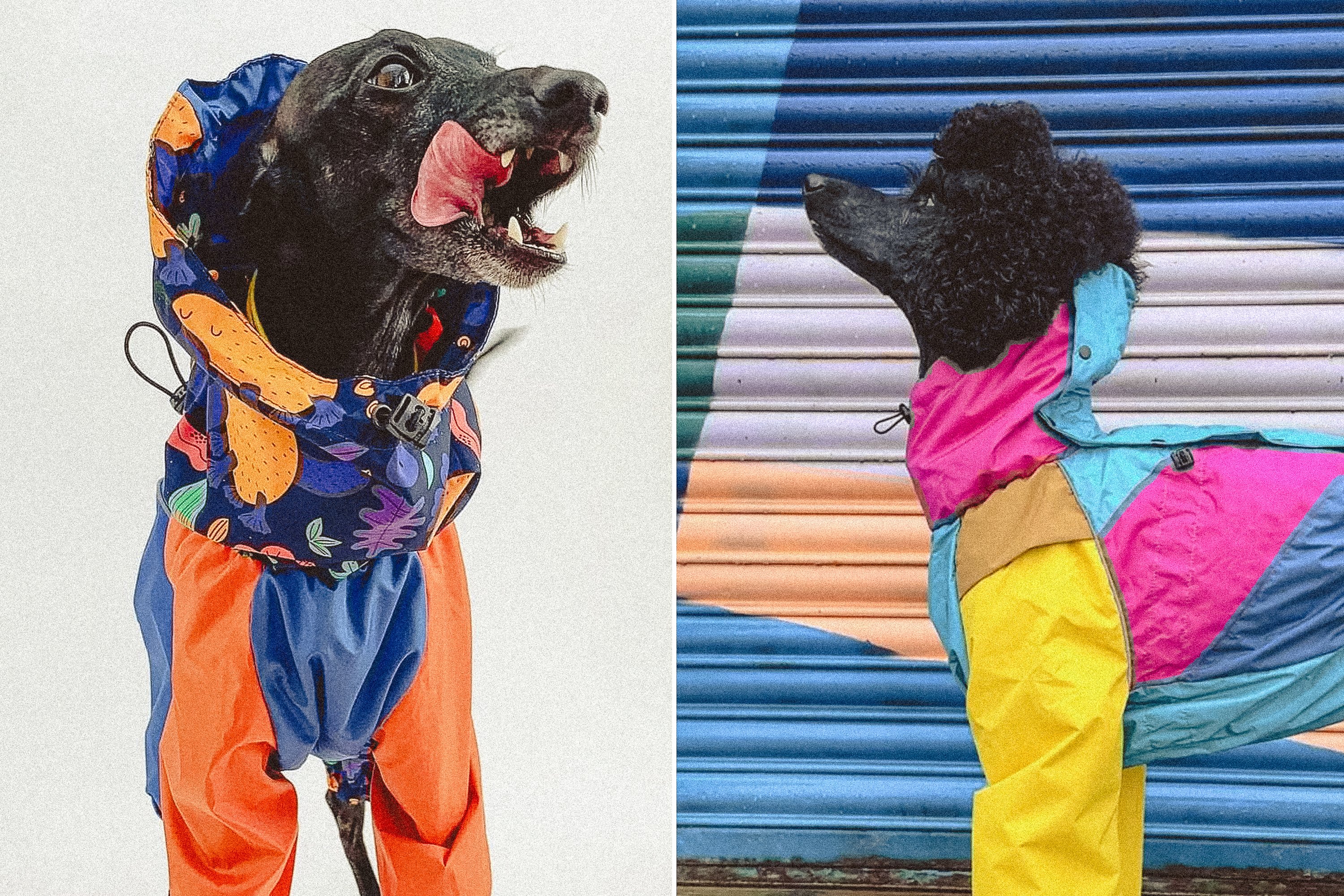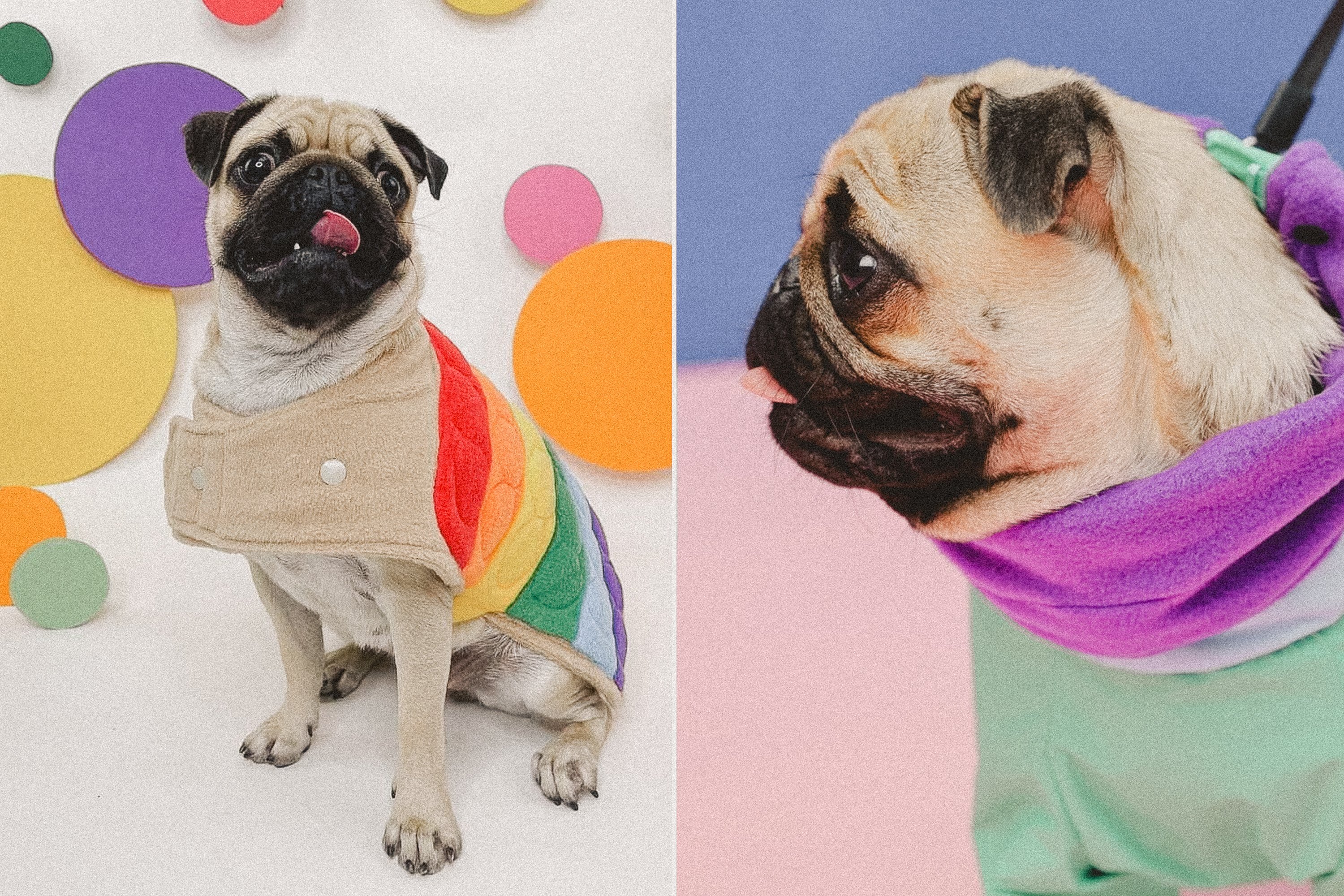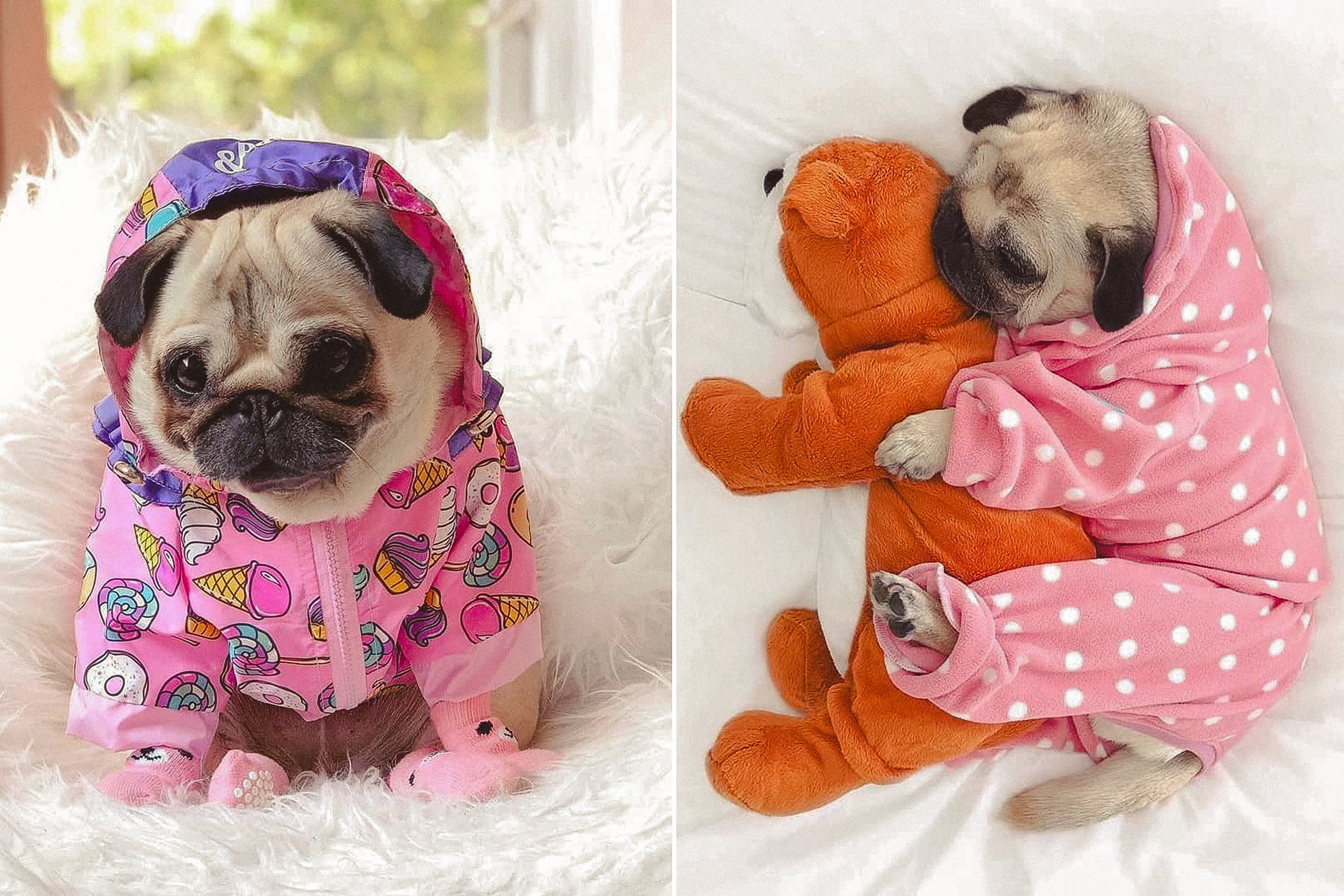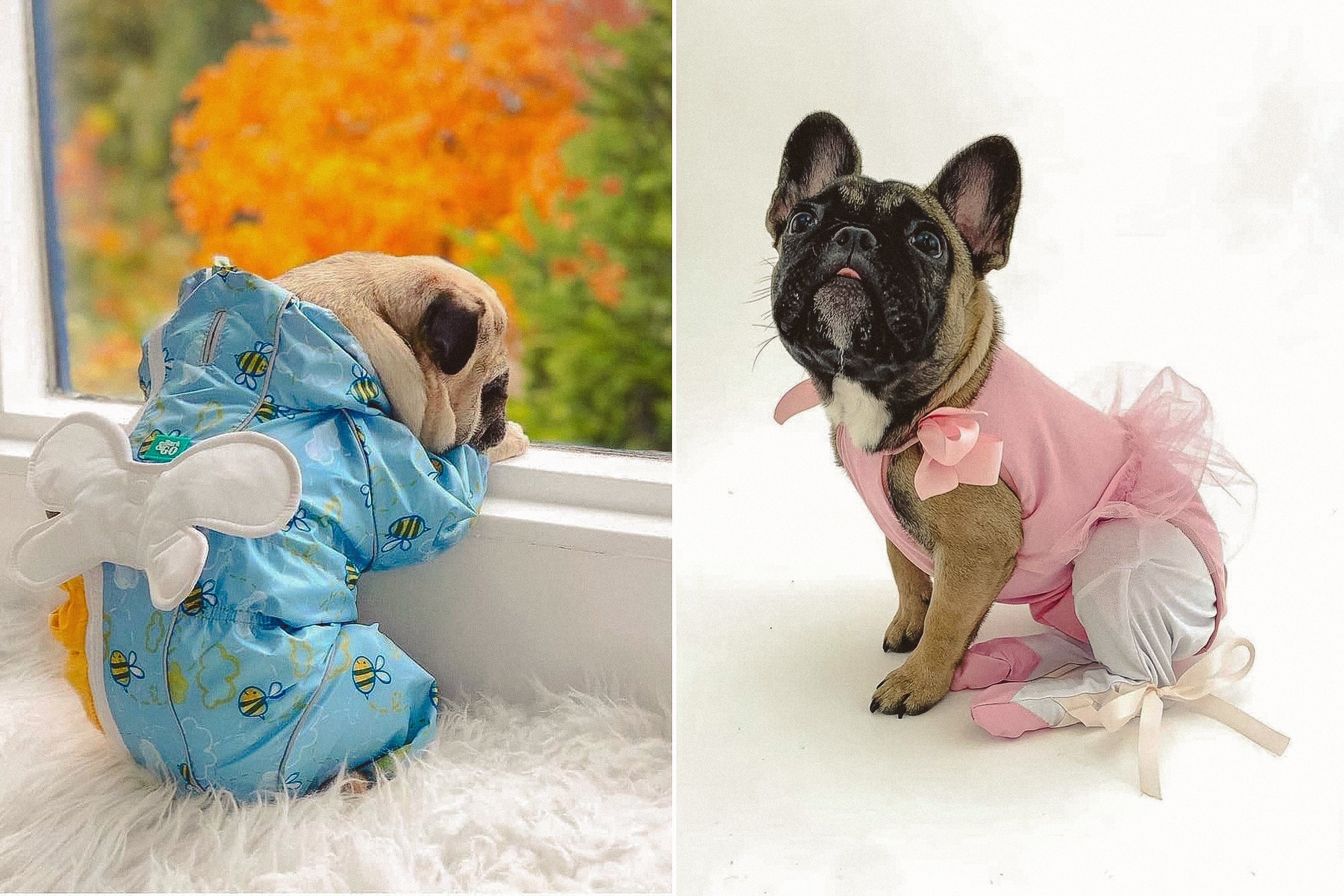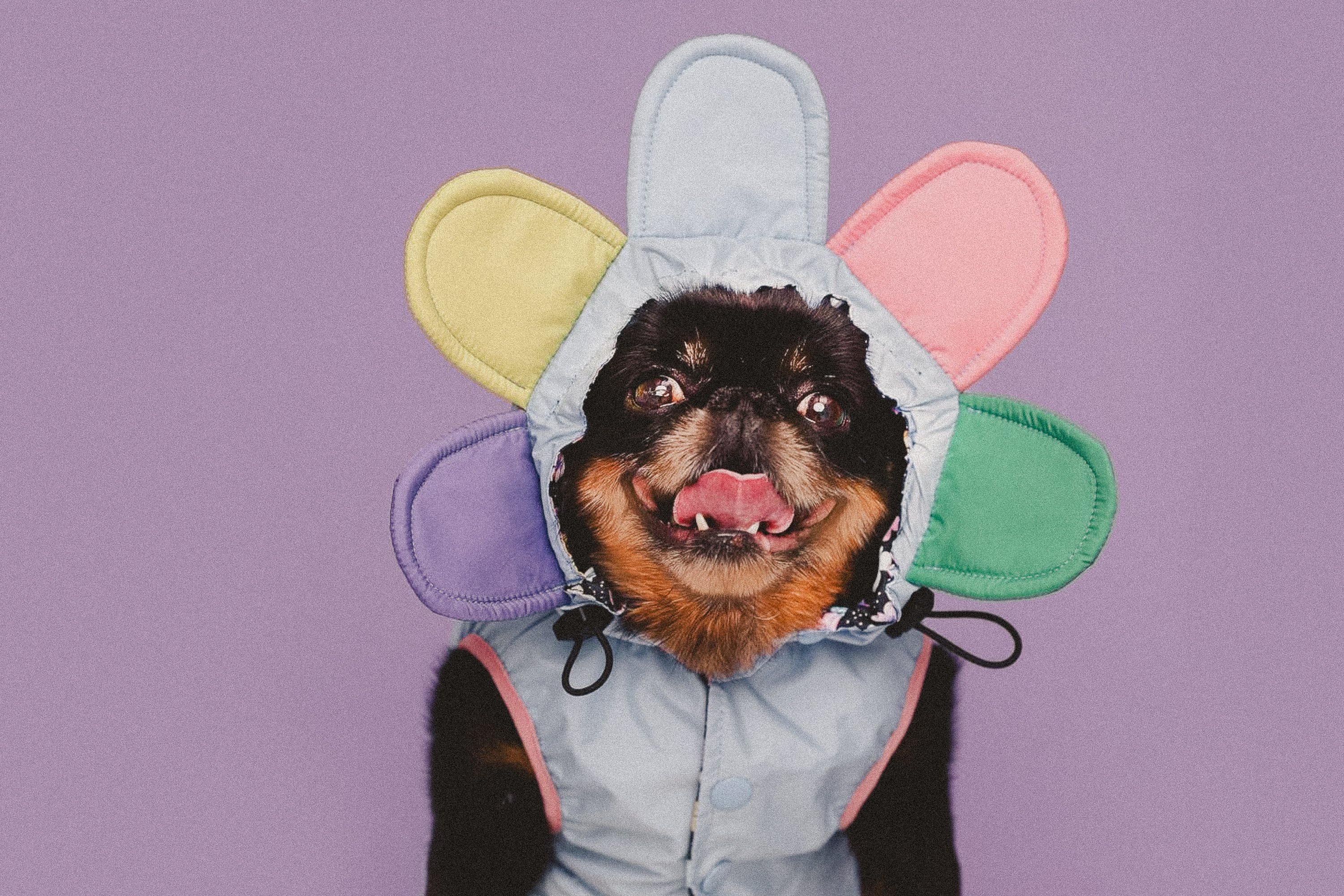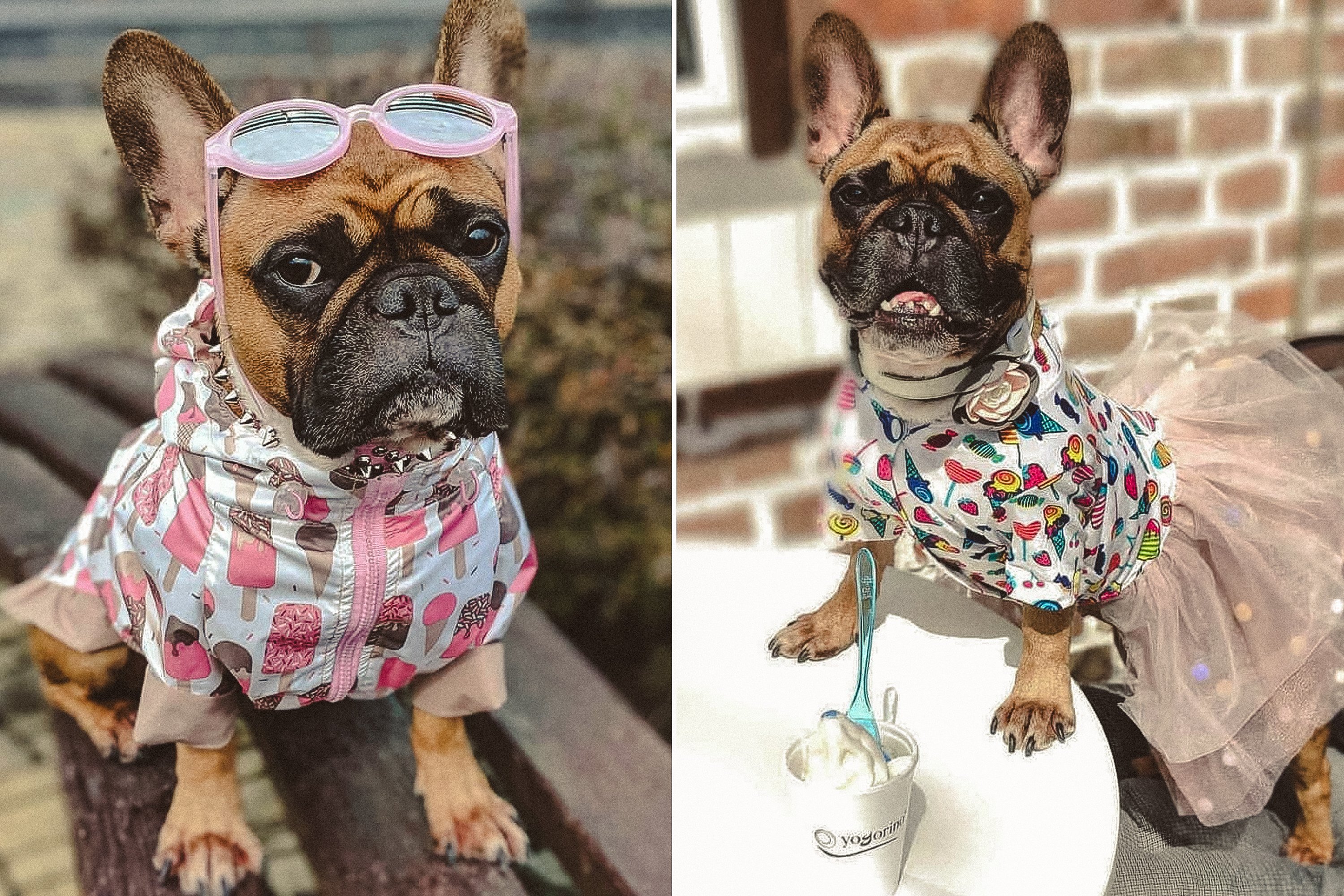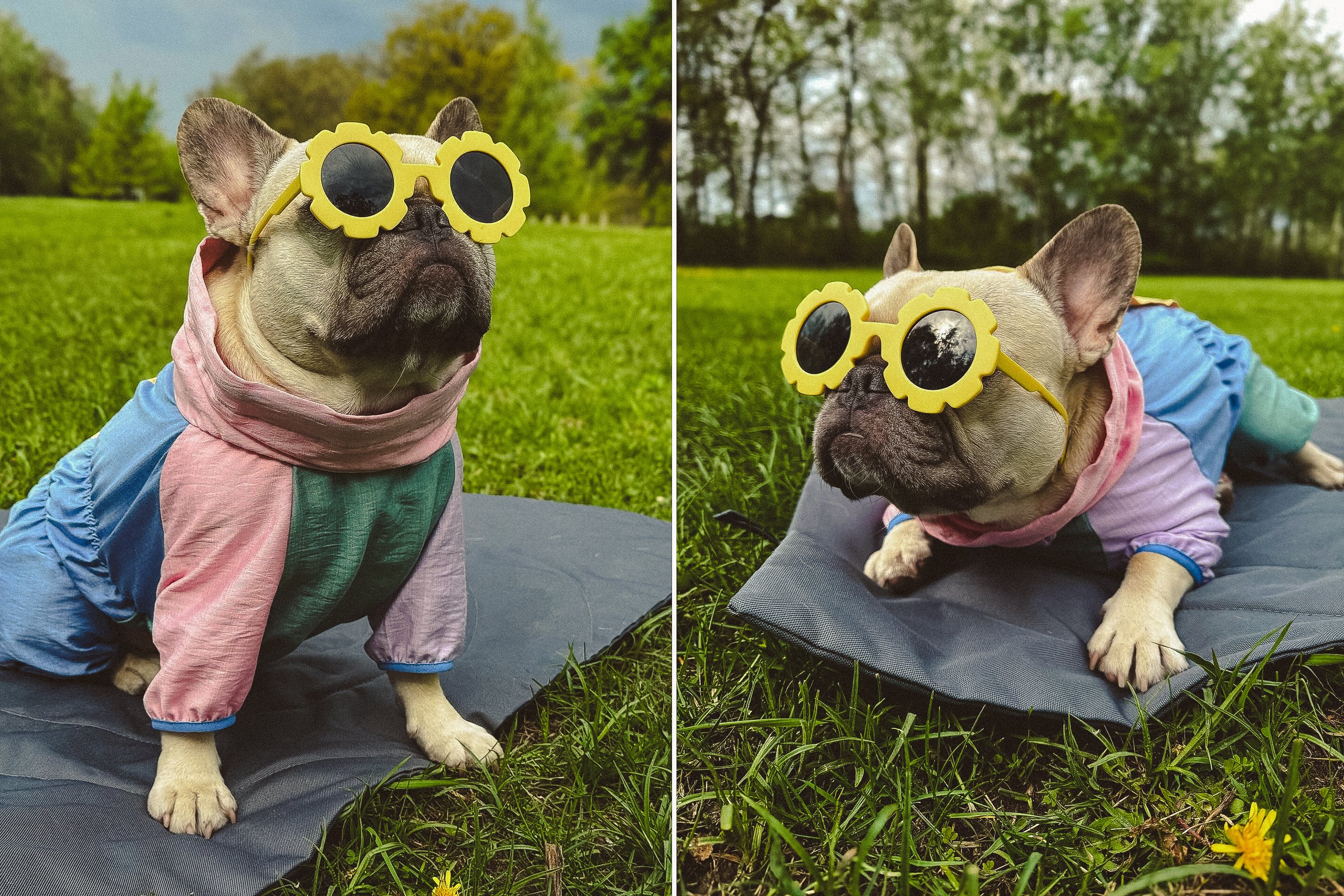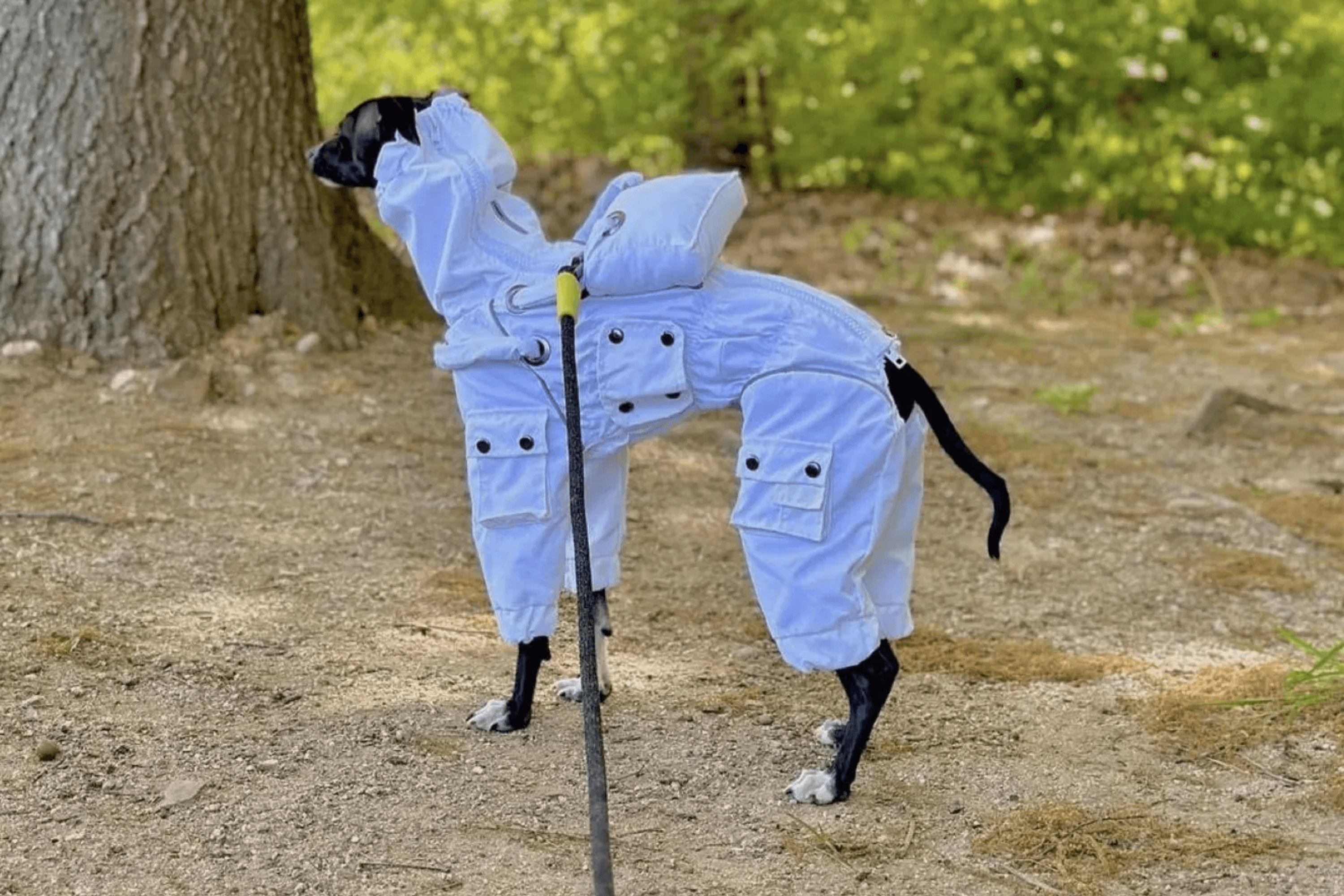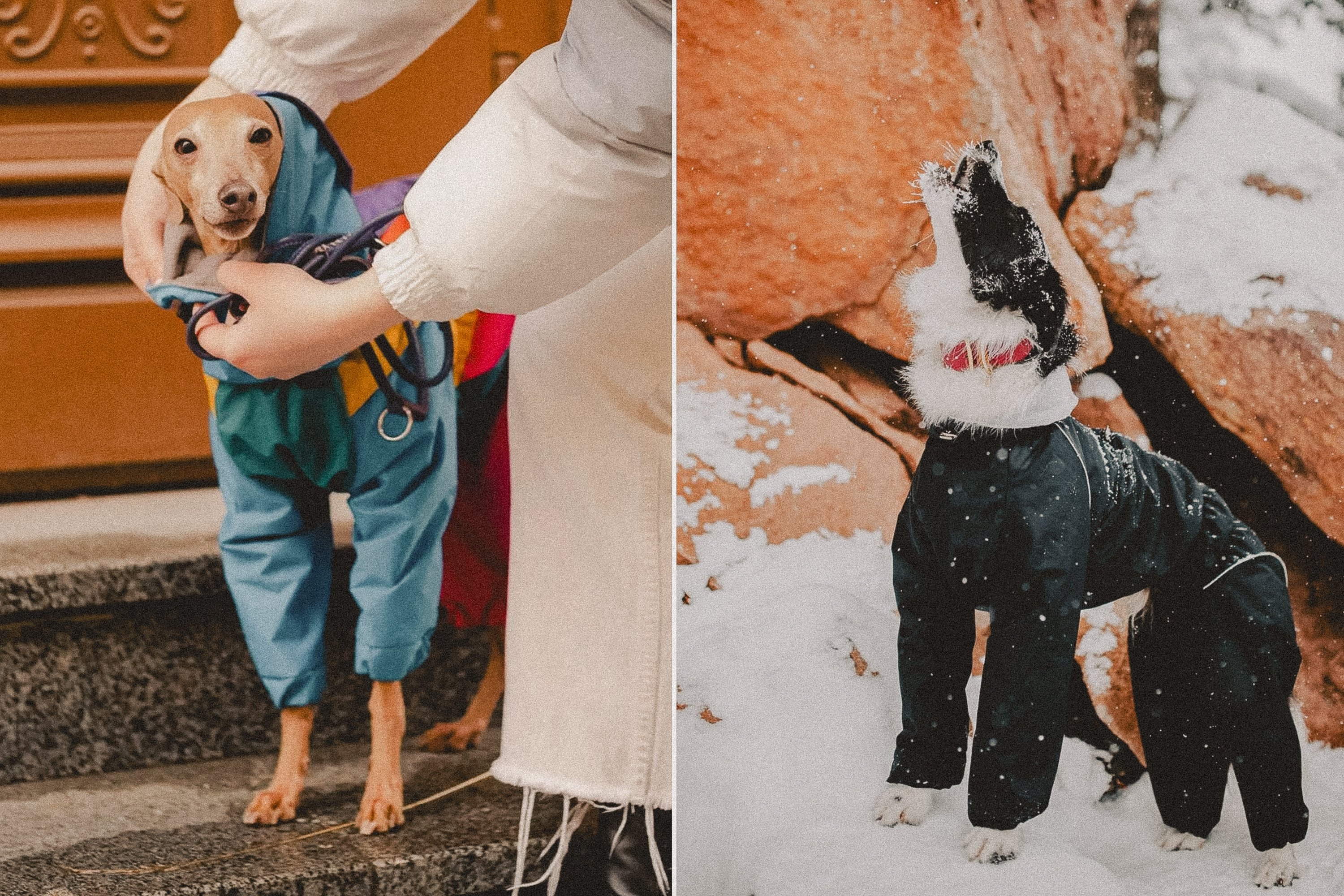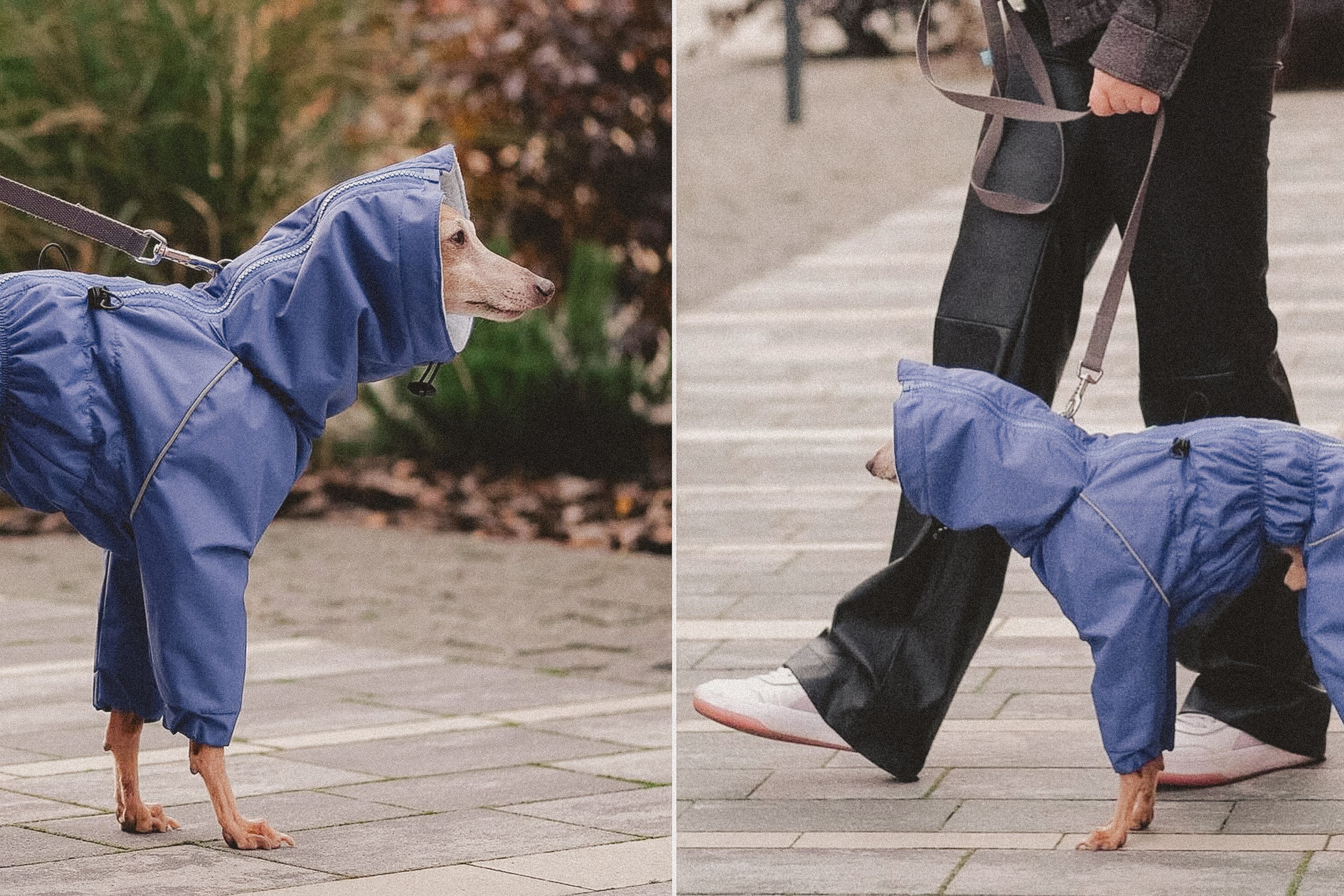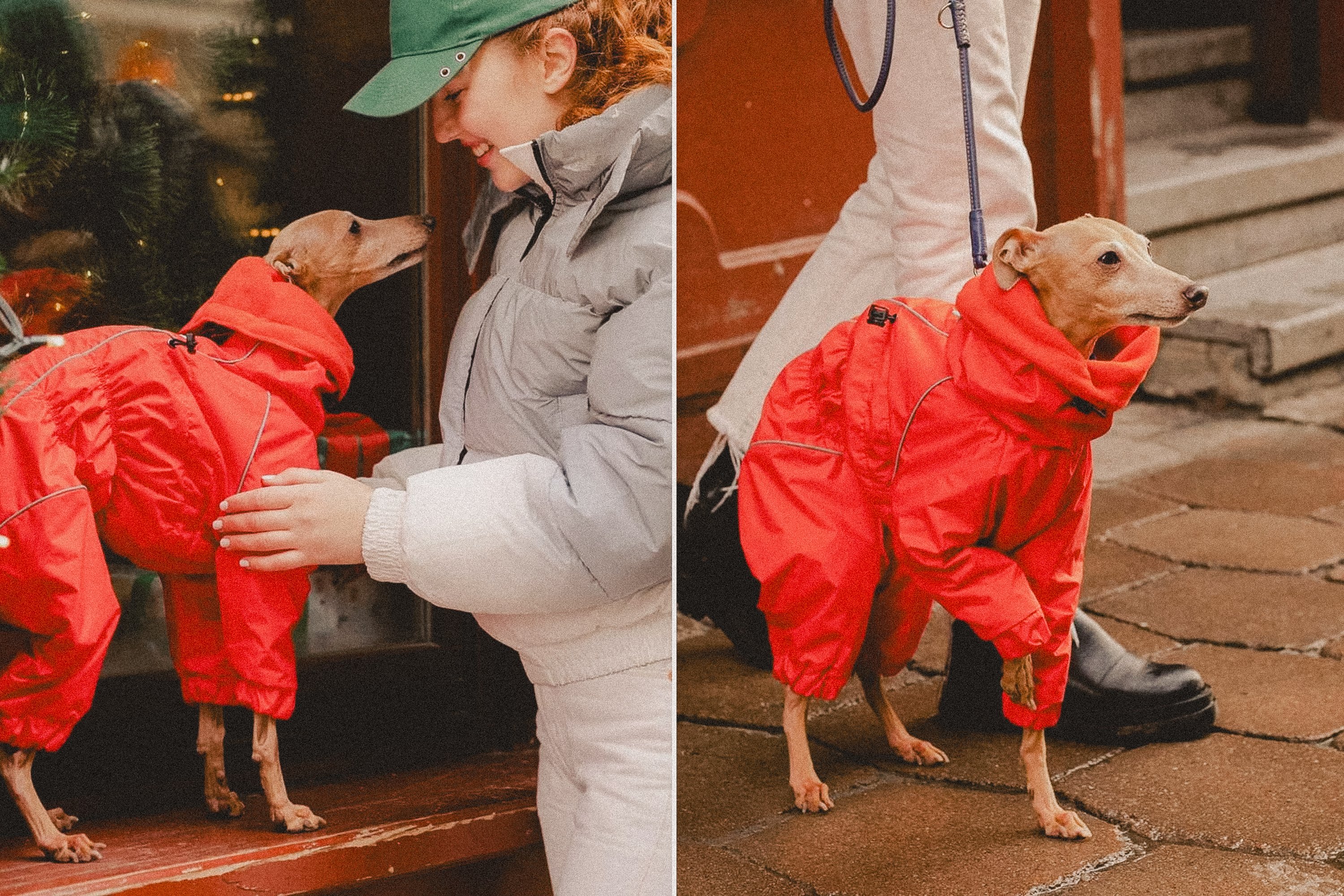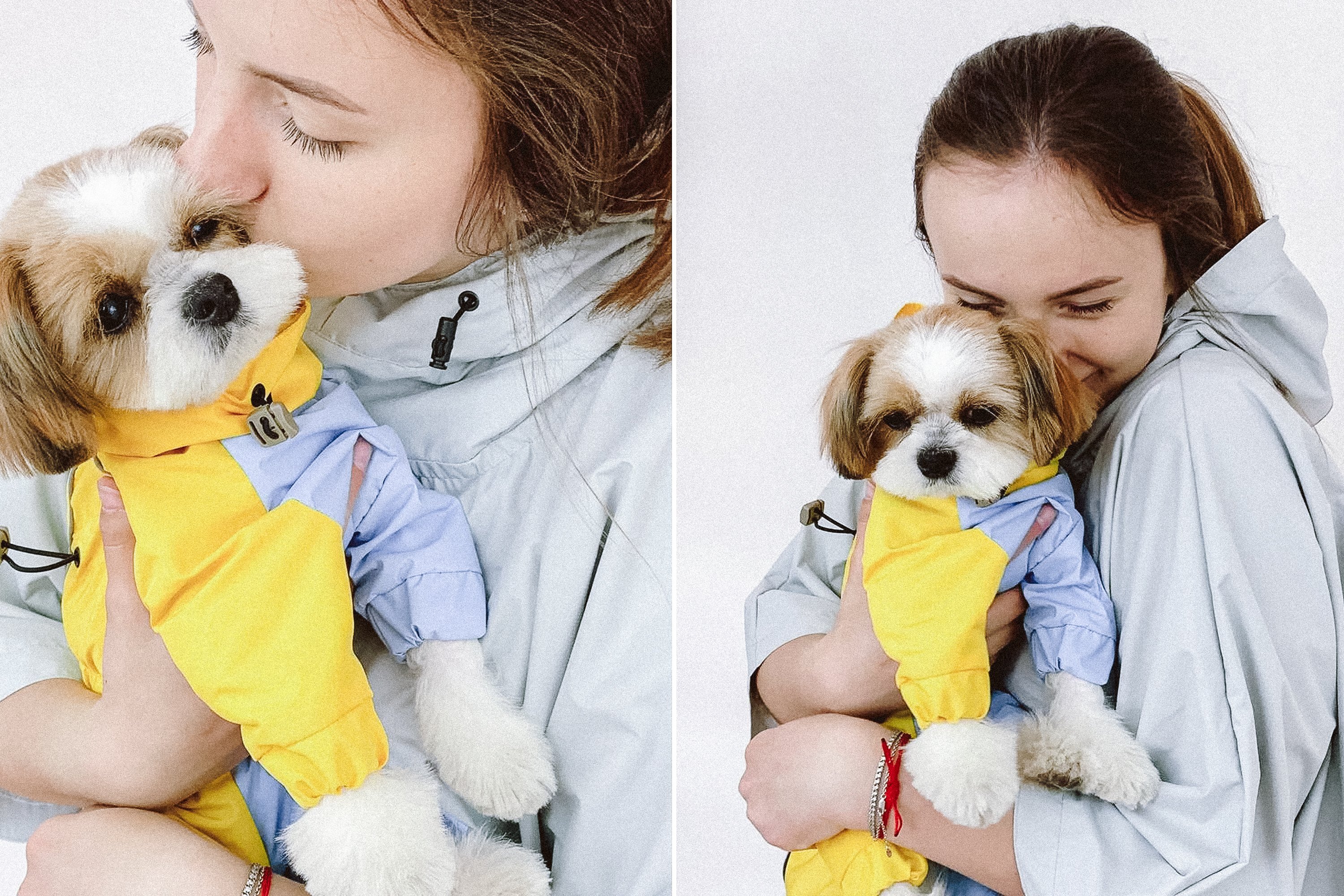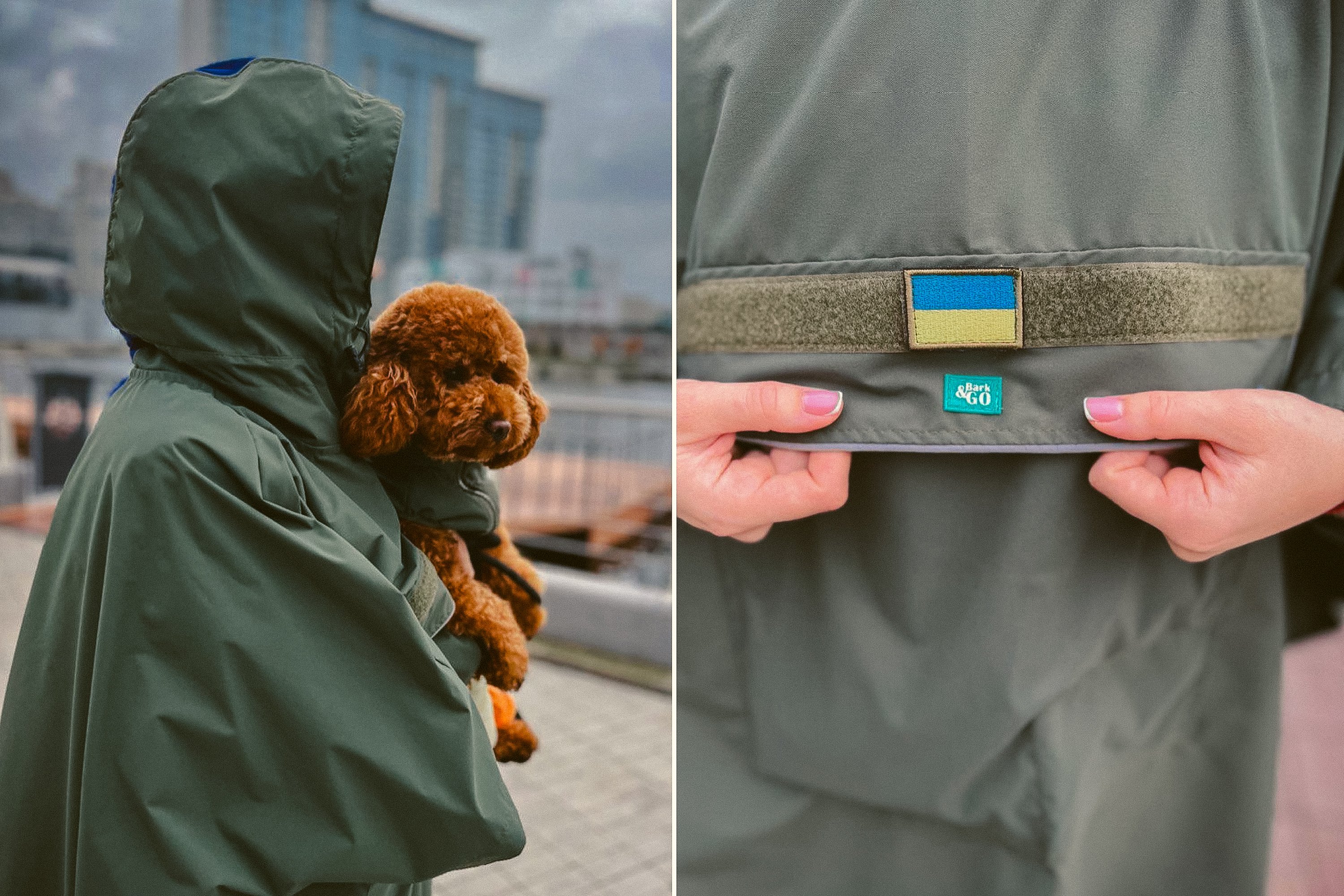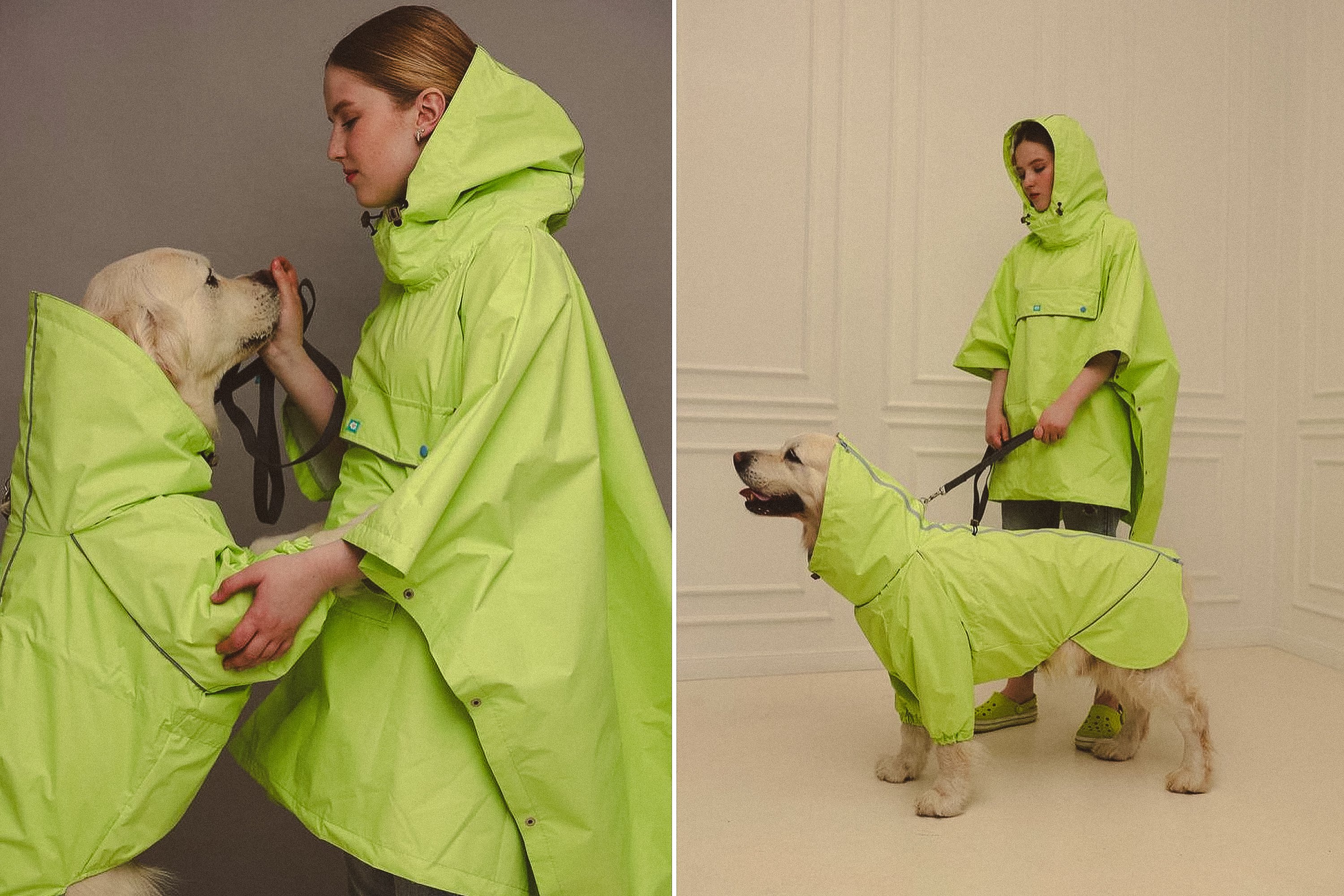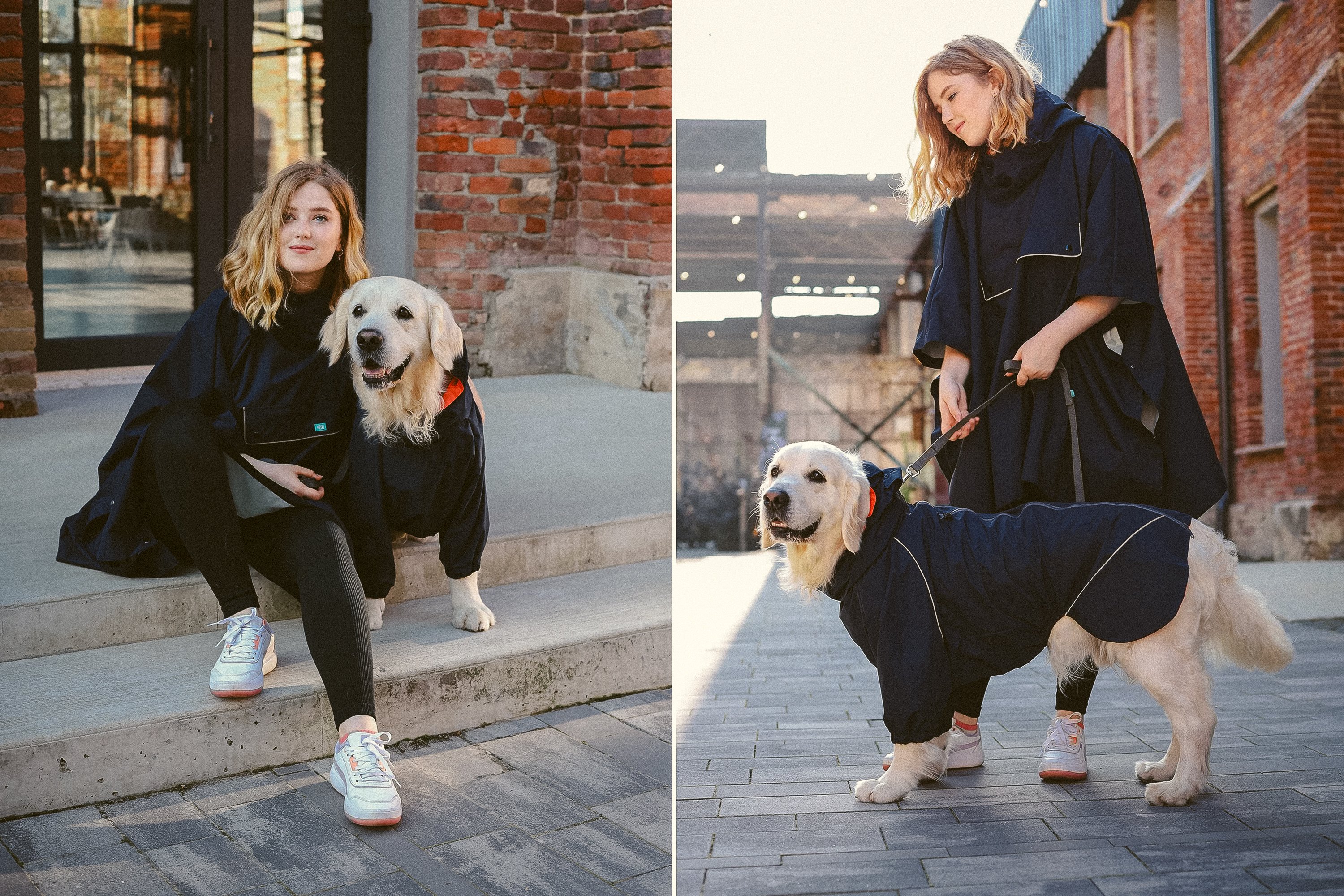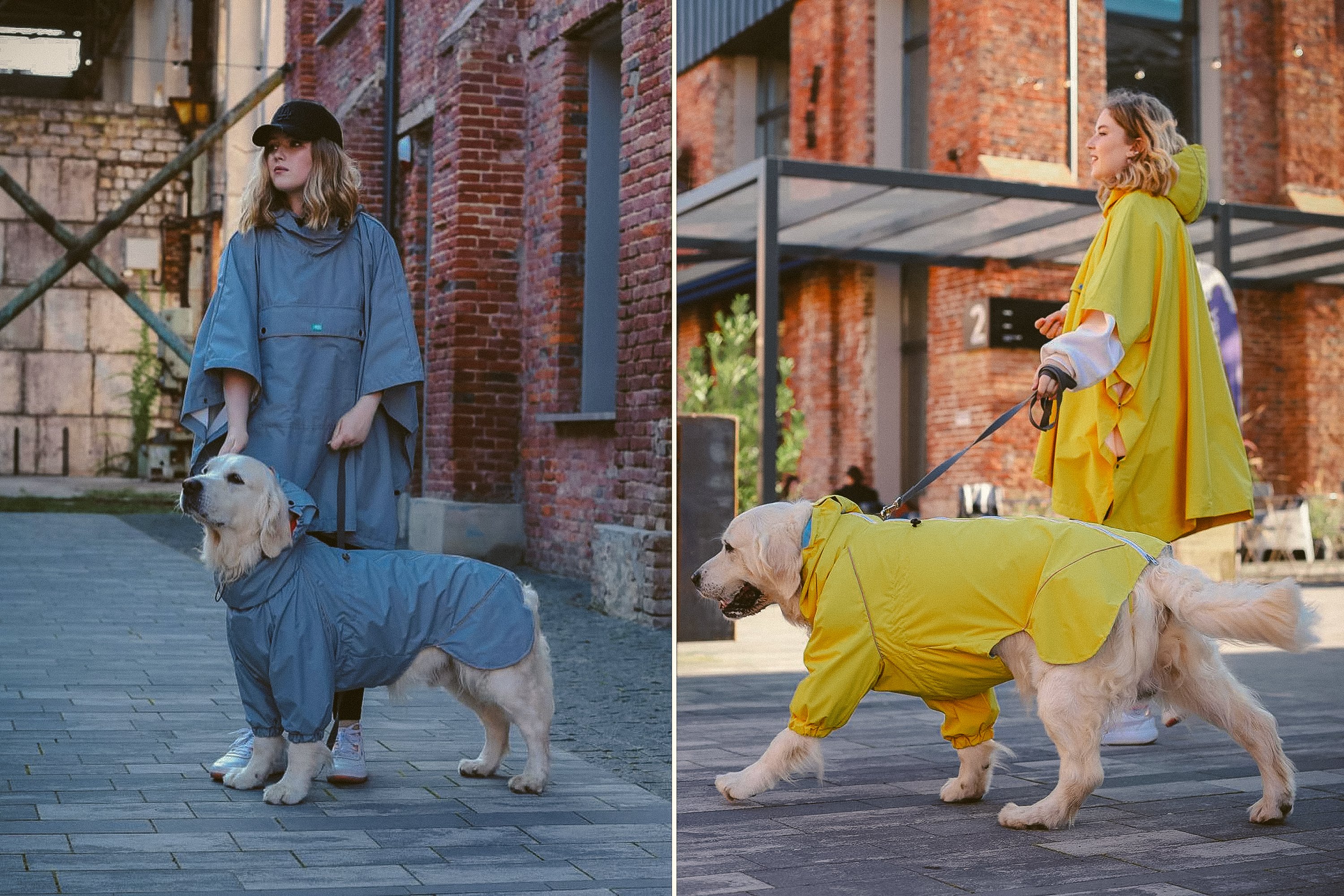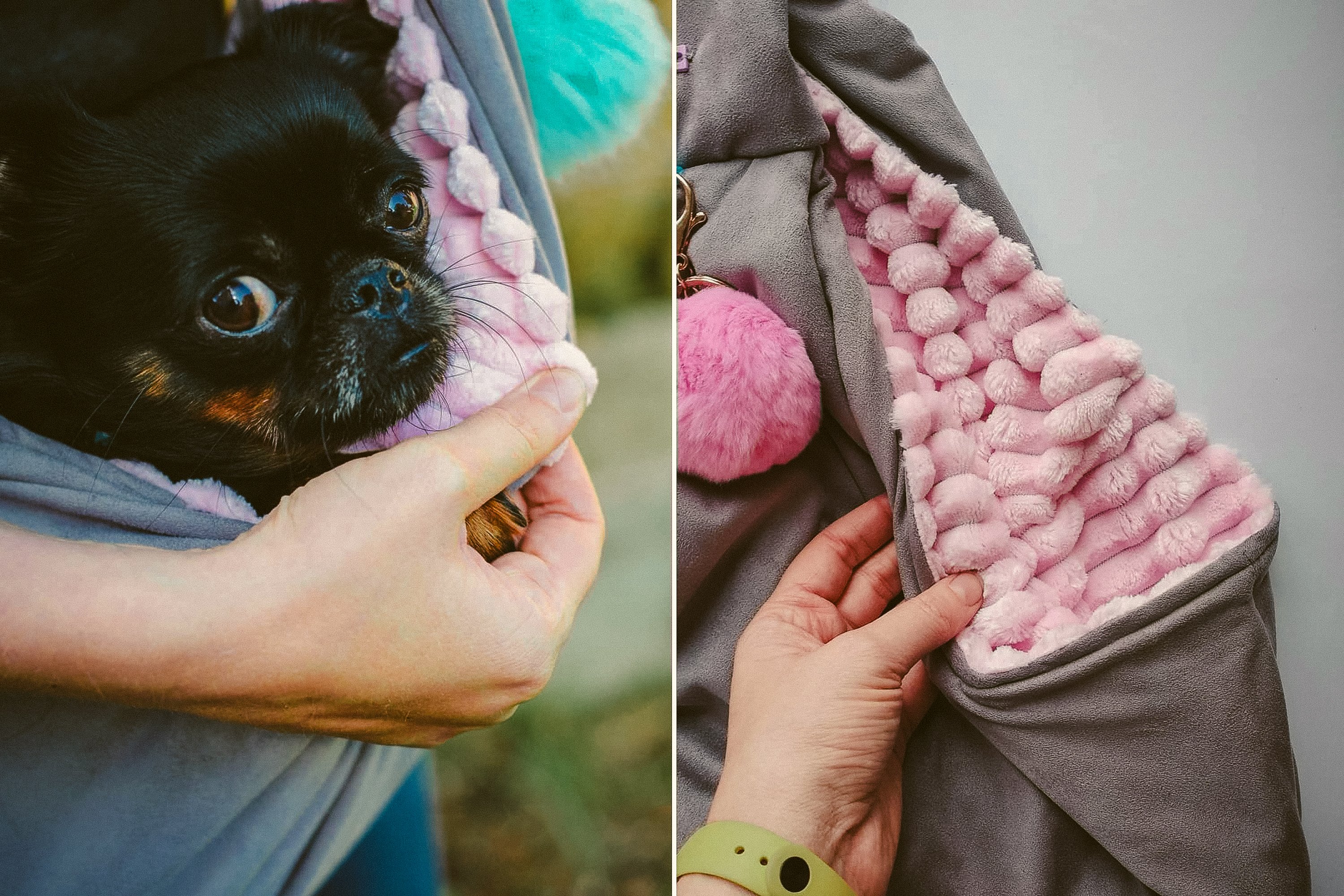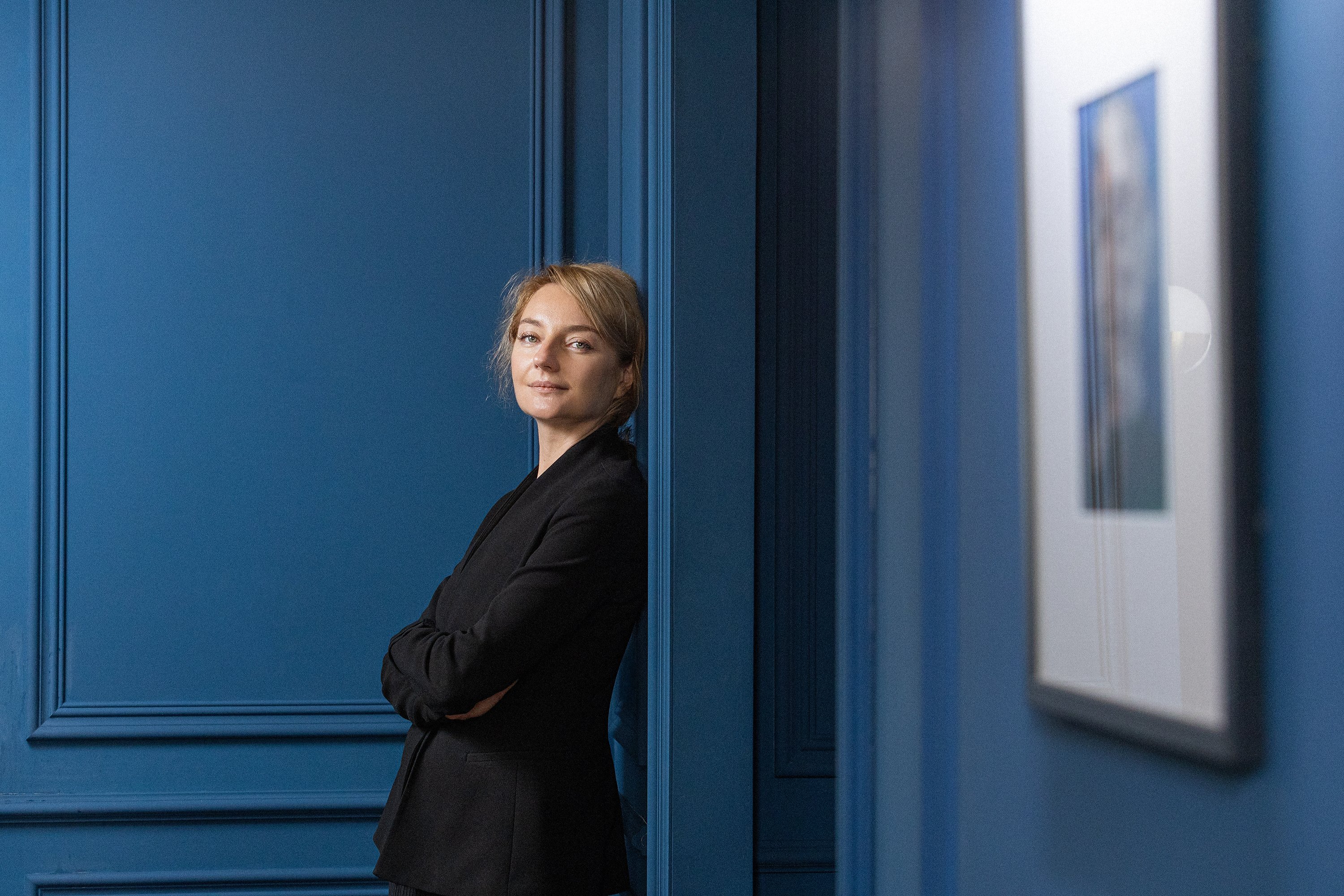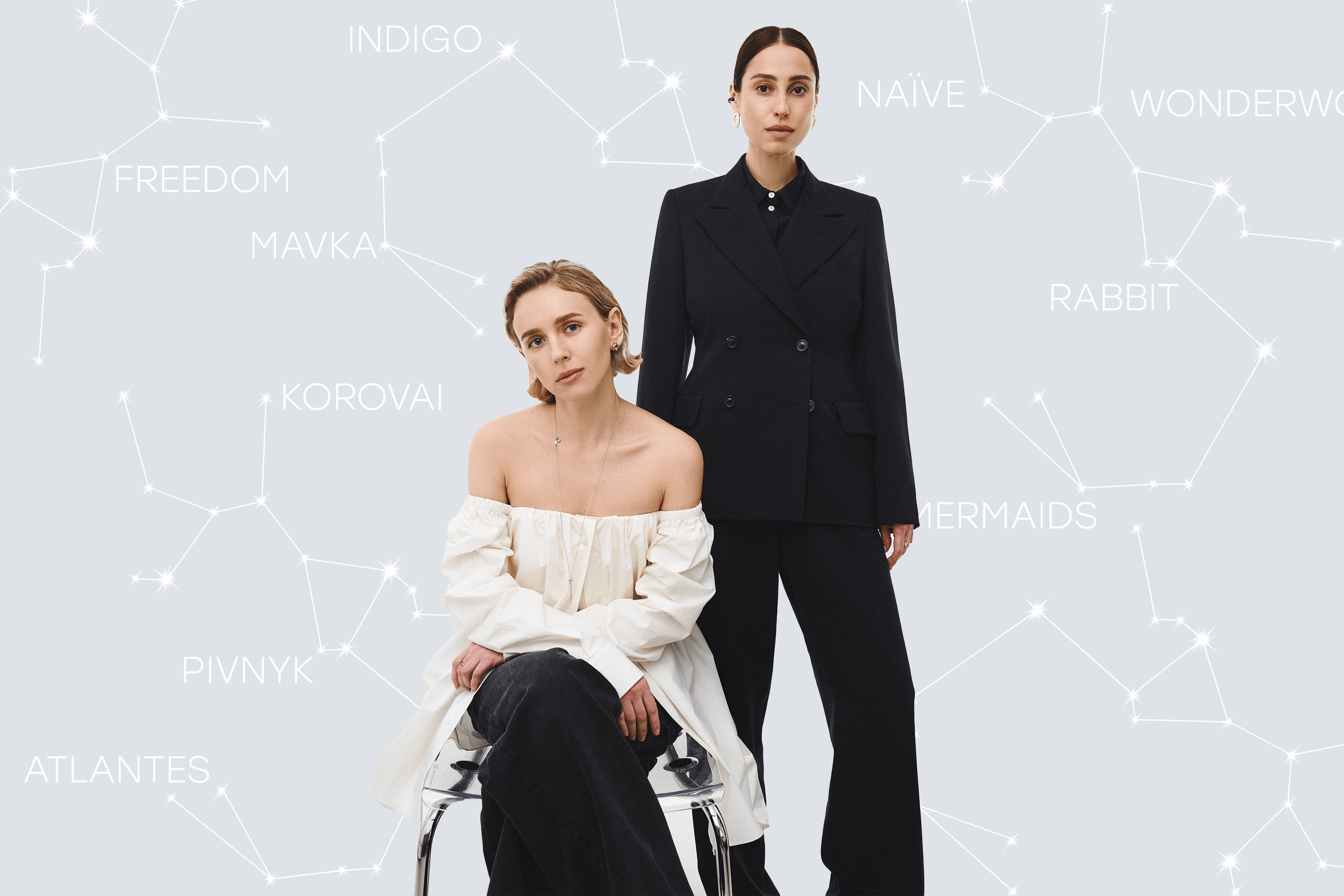Ten years ago, Oleksandra Vakarova started by sewing bandanas in her kitchen for her own dog, a cheerful mixed-breed named Stanislav. Later, she started selling them on social media, where she met Natalya Pasichnyk, a client who would become her co-founder of the Bark&Go dog apparel brand.
Oleksandra dreamed of creating unusual, bright dog overalls, but there was little demand for them in Ukraine. The business partners thus decided to focus on international markets. Before the full-scale Russian invasion of Ukraine, the brand sold dog clothes in 55 countries. Asians were the biggest fans of Bark&Go's bright designs: all of the brand's current wholesale clients are from South Korea, China, and Japan.
Oleksandra takes on not only standard, but also bespoke orders: she has sewn dog costumes in the shape of the Chesapeake Bay Bridge and an astronaut. She is currently working on an overall design for a dog that lives in the desert.
Artem Moskalenko, a journalist for the YBBP platform, sat down with Oleksandra Vakarova to ask what makes her dog overalls so popular in Asia and how the Asian market differs from the American and European ones.
Tell us how the Bark&Go brand came about?
It was a hobby—probably how most businesses start. I got a dog and started sewing things for him. In 2015, I launched the first sales page on a social network. It’s unpleasant to remember, but it was VKontakte. At first, I sold simple, basic items like bandanas. People liked them. Then I went to the Harmyder festival in Lviv, and sold out everything I had in one evening.
Eventually, this hobby started taking up too much time. During the day, I worked as a freelance graphic designer, and at night, I sewed dog clothes. It was difficult to keep that pace, but later I met Natalya Pasichnyk. She placed an order for her dog, and later suggested creating a full-fledged business. That’s how the Bark&Go brand appeared in 2016, although it wasn’t called that yet.
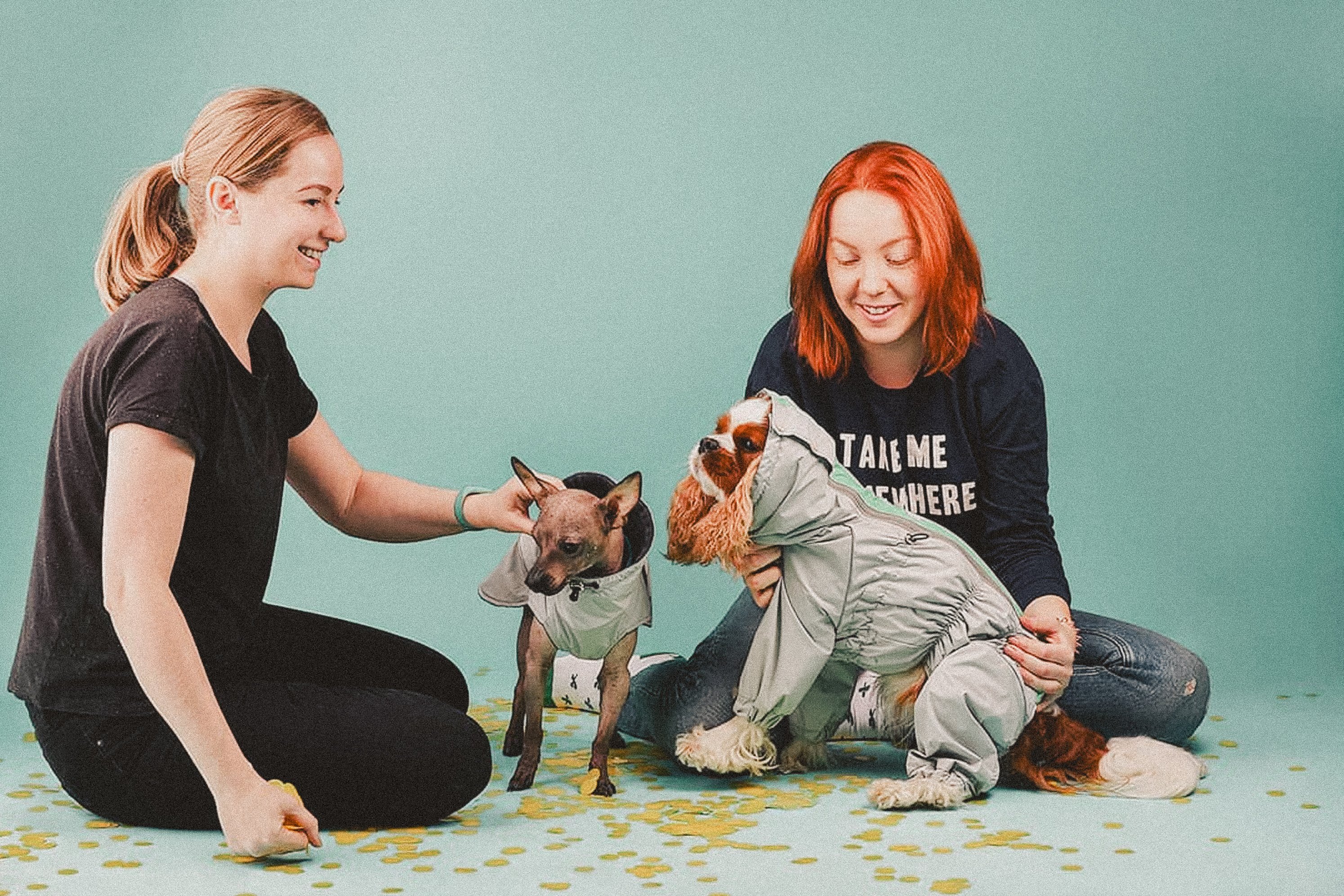
How much did you invest and how did you start the business?
My partner invested $1,000, which we used to rent a small room in Lviv and buy our first sewing machine, because we wanted to sew not just bandanas, but complete apparel for dogs. But in Ukraine, people scoffed at the idea: What, clothes for dogs? If they were ready to buy anything, it would be a simple, dull-colored overall. And I wanted to create something new and bright. That’s why Natalya and I decided to re-focus on foreign markets, where there was more room for imagination. So, we started an account on Etsy.
When did you receive your first order after launching your Etsy shop?
We waited for about a month, and then we reached the level of 5–10 orders per week. It was a huge success at the time. Now, if we have less than 10 orders a day, it’s considered a bad day.
After starting the business, it was just Natalya and I working on it: I sewed the outfits, and she communicated with customers. In addition to the standard overalls, we also made custom, individual pieces. For example, there was a costume of the Chesapeake Bay Bridge—with a mock-up, metal parts, and a complex construction. It was difficult to make, but this costume attracted customers. Therefore, even 5 orders per week were too much for one person to handle.
When did the hobby finally turn into a business?
Even when we started actively selling clothes abroad, it remained more of a hobby for me. For the first five years, I was also working another job to earn a living, and we re-invested all the money from clothing sales into the company’s development.
It was a very difficult time. I literally lived at work: I sewed, cut, packed orders, and communicated with clients. Natalya and I did everything ourselves: we carried boxes, bought fabrics, cleaned, and washed. The amount of work was incredible, but so was the enthusiasm. We just worked our fingers to the bone and lived only for this.
Gradually, things started to work out: the business began to bring in its first profit. We were able to hire our first seamstress to free up some of our own time. And in about five years, Bark&Go had become a fully self-sustaining business. That’s when I finally quit my main job.
Bark&Go became a full-fledged business in 2019–2020, and that’s when the COVID-19 pandemic began. How did it affect the operations?
It was difficult at first, but this period can actually be called our peak. In 2020, we had just started selling goods to wholesale customers, and business was growing. Then COVID hit, and the number of orders decreased dramatically. We had a rainy day fund, and it was the only reason we lasted for a while.
And then everything changed dramatically again: people realized they would be staying home for a long time, started getting dogs, and bought more online, including clothes for animals. We began to grow rapidly again. New wholesale buyers appeared. We moved to a larger production facility, started hiring a team, and it grew to 15 people.
How did you look for wholesale customers abroad?
They approached me themselves: some through our English-language Instagram page, some through Etsy. It seems that in 2019, Etsy was trying to launch a bulk ordering platform; we joined it, and although it didn’t last long, we got customers from there too. The main partners then were from Asia: South Korea, China, and Hong Kong. There were also two orders from Canada, but the customer just stopped responding to messages. Everything was developing well, but then it collapsed again very quickly…
Do you mean Russia’s full-scale invasion of Ukraine?
Yes. We, like most, couldn’t believe that a full-scale war would begin. The day before, we invested a lot of money in development: we bought fabric, moved to a large production premises of 330 square meters (3,550 square feet — YBBP), and hired more people. And then the invasion began. At that time, we had many orders, both wholesale and retail. But it became impossible to work. Most of the female workers left because they had two, three, or even four children. I had to let everyone go, and we barely worked for three months.
We refused most of the orders, and completed some ourselves—it was just me, my husband, our daughter, and our courier. The four of us worked in an unheated room at 9°C below zero (16°F — YBBP). It was a real test, and it didn’t save us from losses.
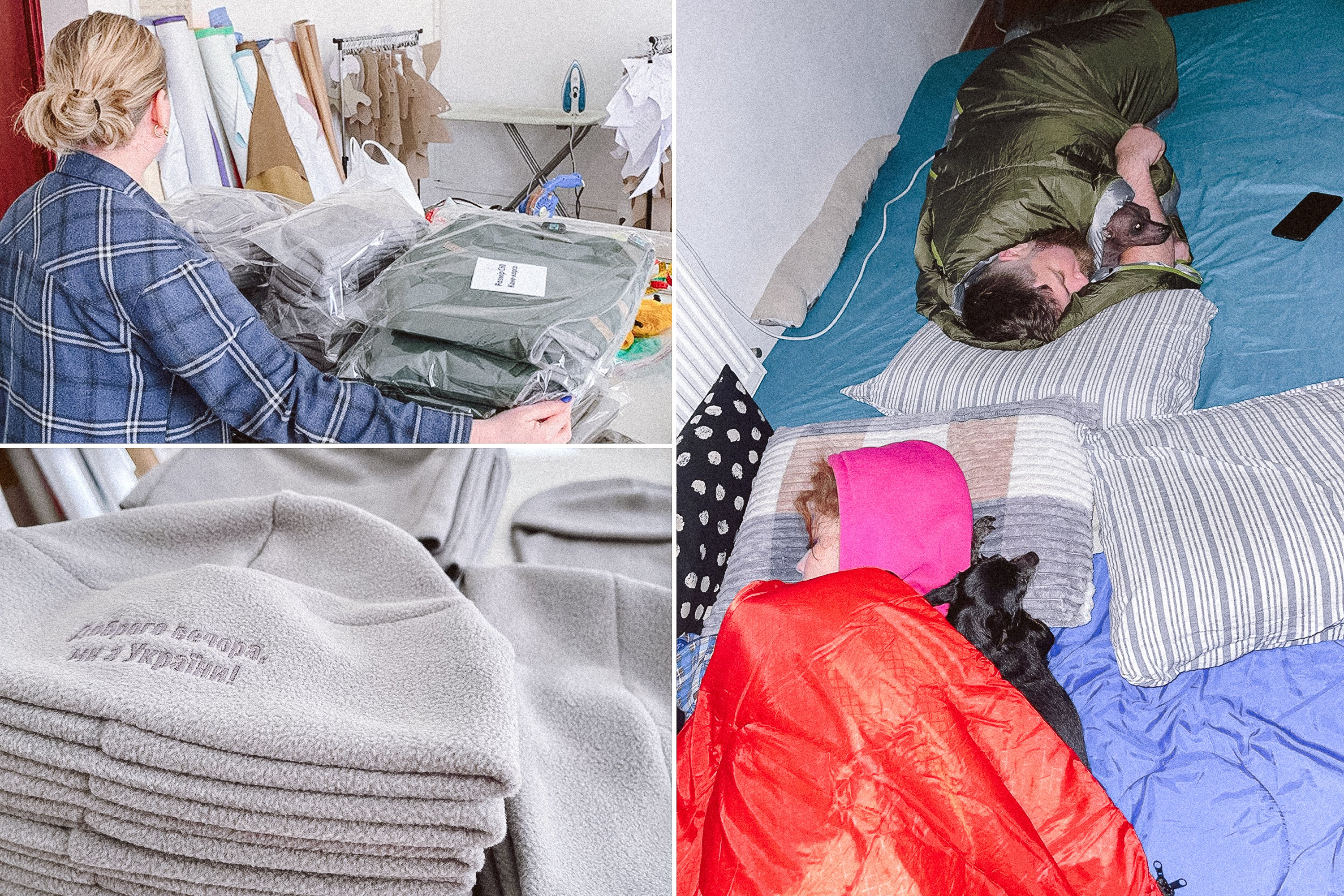
We had a financial cushion intended for development. We spent it completely just to survive and not close. Later, we realized that we could not maintain such a large production. In the middle of 2022, we moved again to a different premises, reduced the team by half, and began to gradually recover.
Sales fell catastrophically—by 70% abroad. People were afraid to buy because of the war; they weren’t sure that we would fulfill their orders. It was the same with wholesale customers: they didn’t risk signing long-term contracts. It seemed like we were starting from scratch again—looking for clients, spending our last money. After a great rise, we experienced a very hard fall. We managed to keep about half of our wholesale customers, and gradually new customers began to appear.
How big is Bark&Go now?
It’s a small company. I would even say it’s a craft workshop. We’ve almost halved from our most profitable years, and now our turnover is up to $4 million a year. Last year was particularly difficult; we were actually on the verge of closing. We faced a choice: scale up and invest further, or cut costs. I was ready to move forward, but the other co-owner was not. So we parted ways and I bought out her share.
Essentially, I’m starting from scratch again. Now I have a production team of only five people. But I see the future and, despite all the difficulties, I’m ready to develop this business for another 5 to 10 years.
Where do you currently get the most orders from?
The bulk of our wholesale customers remain from Asia—South Korea and Hong Kong. In 2024, we went to Orlando, USA, for the world’s largest exhibition, Global PETEXPO, and even there we were mostly visited by Asian distributors. Most potential partners from America are also of Asian origin.
After Asia, our top retail clients are the UK and the Nordic countries—Sweden, Finland, Norway—as well as Switzerland and the USA.
Since the company’s operation began, we have sold overalls to more than 55 countries—both one-off and regular orders. We used to have a map where we marked even single orders.
How did you manage to win the competition in Asia? Is it about the membrane, which you use in your overalls?
No, membranes have long been used in dog clothes abroad. We were simply the first to use them in Ukraine. In my opinion, the main thing that distinguishes our clothes is the design and cut. We offer many sizes for all types of dogs. We tailor them so that the animal’s belly is completely covered, and we also provide separate openings for male and female dogs. Our cut reliably protects the dog from dirt and wind, but at the same time, it does not restrict movement.
When we send large batches to China, people at the post office ask: “What are you selling to China? Don’t they have that?” But it’s the design that works. We have many models, and the collections are constantly updated. We monitor fashion trends among people and adapt them to dog clothes. I think that’s why it works.
How exactly do you follow fashion trends?
I analyze Instagram and Pinterest—social media in general. I watch how people dress. I watch certain fashion shows. That’s why I have a sense of style and an eye for detail. Previously, I worked as a graphic designer in a fashion magazine in Lviv and collaborated with foreign publications. This experience helps me understand trends and adapt them to dog clothes.
You mentioned custom dog suits. Does this bring Bark&Go more revenue or recognition?
Five years ago, it was more about making money. At that time, we only had a few people working for us, and there weren’t many orders. Customers paid significantly more for a custom suit than for a regular overall.
Now, it’s not so much about the money as it is about marketing. Designing a custom costume takes a lot of time—from idea to tailoring. But such orders give us the opportunity to tell a story, show the process, and generate interest among people.
A man from the US recently wrote to me that he and his dog are moving to the desert and he needs a rattlesnake suit. This is a one-off order, but I took it because I see the marketing potential: we will shoot a video, show how this suit was conceived and sewn, and then the client will also send us a video from the desert. It will definitely get people interested. And maybe it will even help us open a new product line. I checked—there are no such costumes for dogs, so maybe there will be a demand for them, and we will start selling them en masse.
Halloween costumes work in a similar way. We make them, shoot videos, and see how popular they are.
We once sewed an astronaut dog suit for an advertising campaign in Ukraine. We just took a picture, put it online—and it became a hit. It was massively ordered to Korea, China, and Japan. The dogs there even simply went outside in these costumes.
Where do individual orders most often come from?
Mostly via Etsy now. But we don’t take all of them—only those that seem interesting and that we can shoot a story about. Usually, such a suit is 10 to 30% more expensive than a standard one. If something is very unique, the price tag can be twice as much. The most expensive was a customized astronaut costume for a large dog, which cost $400.
Is Etsy still your primary sales channel?
Absolutely not. In 2022, Etsy actually stopped being profitable for us; we received almost no orders from there. Until 2024, the store was barely functioning; we didn’t develop it, and only received a few single, sporadic orders. But it’s an old and recognizable platform, so I decided that I shouldn’t leave it idle. This year, we started to promote it more actively—and in recent months there has been some movement there; the Etsy store has started to bring in money again.
The main sales now are bulk orders abroad through partners with whom we’ve been cooperating for a long time. We have a website, but it is focused more on Ukraine. Here, too, wholesale clients appeared during the full-scale invasion. In parallel, we are working on a foreign-facing website where we plan to handle retail sales for international customers.
You work with clients from Asia, the USA, and Europe. What are their differences?
First of all, the difference is in the people and the approach to cooperation. In Asia, buyers are more emotional, make decisions quickly, and pay more attention to design than practicality. They are a little chaotic, so it’s more difficult to establish stable cooperation with them. But at the same time, they are fast: we correspond via WhatsApp, and they promptly respond to messages.
The American market is cool, but almost inaccessible to us: it’s very big, and we are still small. To become visible and start negotiating with distributors requires a large investment and a constant presence for three to four years at exhibitions—such as Global PETEXPO. We don’t yet have the resources for such a scale.
We don’t have a single bulk order from Europe yet. The rhythm of work there is slower than in Ukraine: you have to act through phone calls and personal conversations, while here everything is quickly resolved via correspondence on LinkedIn, Telegram, or emails.
Does the Ukrainian origin of the brand help or hinder work in foreign markets?
It has gone both ways: it has helped and hindered. At first, the origin was almost unimportant; people didn’t care where we were from, the main thing was that the product was of good quality. Customers often even thought we were from the States and were surprised when they saw the long delivery time. At the beginning of the full-scale war, this rather became a disadvantage: sometimes someone supported us, but in general there was more caution—people were afraid to order something from Ukraine. Now the reaction is much more positive: customers are sincerely surprised that we are working and even developing.
I always emphasize that we are a brand from Ukraine. It is important to me. At certain points, it would be easier to close production, outsource tailoring, and leave only the brand. Many companies do this. But my dream is to develop production here in Ukraine. This way, we can create cool clothes for dogs, make interesting models, be recognizable abroad, and at the same time provide jobs for people here.
In fact, China is supporting Russia in a full-scale war against Ukraine. Is the Ukrainian origin of the brand not a problem for them?
They don’t think about it at all. In Kyiv, we met with one of the distributors; he lives in Ukraine for part of his life and understands what is happening here. He treats our brand well. But our main buyers in Asia are South Koreans. There are no problems there; they don’t care where the brand is from. Although our line of yellow and blue overalls sold very well there, I’m not sure that they associated these colors specifically with Ukraine.
Are you planning to expand your presence in markets other than Asia?
Yes. Now we are working hard so that we have not only individual retail buyers in other countries, but also wholesale ones. I work with Start Global, a consulting company that helps businesses enter foreign markets. Their founder, Dmytro Shvets, is my mentor.
We have chosen one European country—Sweden—and are moving in that direction. We plan to appear on the Swedish market in 2026, and for it to take first place in terms of wholesale sales. And then slowly, it will be possible to expand to neighboring countries.
How much money have you already invested to enter this market?
It’s difficult to say exactly, because we invested in both training and work with a consulting company, with which we are currently cooperating. At the moment of signing an agreement with Start Global, it all cost us a little over $3,000. Plus, I spend a lot of time on this project: every day I look for contacts on LinkedIn, and I complete all the tasks that we discuss with the mentor. There are still additional costs ahead—documentation, possibly warehouse rental, and logistics.
Would you recommend working with a mentor to other entrepreneurs?
Yes, I definitely recommend it. Especially for small businesses, which find it difficult to deal with everything themselves. Because you constantly do everything a little at a time, but you don’t have time to fully immerse yourself in a specific task. To do this, you either need to delegate a lot and allocate resources to hiring people, or attract a specialist like Dmytro.
He and I have been working for about a year. I already understand many processes and have reached a level where it’s easier to hire specific specialists for further development than to do everything myself. Dmytro is a very smart person, has a lot of experience and successful cases where companies entered the markets of Japan, Great Britain, and other countries. I wanted to cooperate with him for a long time, but there was no financial possibility. And now we managed to get a grant for cooperation and sign a contract.
Which grant did you receive?
“Create”. But it’s not the only grant we applied for and received. It’s a shame that grant opportunities for entrepreneurs came about because of such tragic events—a full-scale war—but it’s very useful for business.
It takes a month or six weeks to write a grant application and a lot of effort, and no one guarantees the result. But I have already received three grants of different sizes, which helps incredibly.
You said that you are ready to develop the business for another 5–10 years. What kind of company do you see Bark&Go becoming after this time?
It seems to me that if we move at the current pace, in five years we will already be in three main markets: in Asia, Europe, and the United States. I would like to have permanent distributors there and be sold in large chains. First, of course, we need to go to small distributors, become recognizable, and work with small networks for several years. The most difficult thing is to find sales, to understand where to sell. And after that, production can be scaled up.
I believe that in ten years we will be able to have at least one or two contracts with major networks. Even if it’s only Asia and Europe, this is already a huge step forward.
